Glaucoma suspect symptoms. Glaucoma Suspect: Understanding Symptoms, Risk Factors, and Management
What are the key symptoms of a glaucoma suspect. How is a glaucoma suspect different from someone with diagnosed glaucoma. What factors contribute to being classified as a glaucoma suspect. How is a glaucoma suspect monitored and managed over time.
What Defines a Glaucoma Suspect?
A glaucoma suspect is an individual who exhibits certain risk factors or early signs that suggest a higher likelihood of developing glaucoma, but does not yet have definitive evidence of the disease. This classification is crucial for early detection and prevention of glaucoma, a group of eye conditions that can lead to irreversible vision loss if left untreated.
Several factors can lead to someone being labeled a glaucoma suspect:
- Elevated intraocular pressure (IOP)
- Suspicious optic nerve appearance
- Family history of glaucoma
- Certain ethnic backgrounds (e.g., African-American)
- Advanced age
- Presence of other risk factors (e.g., myopia, thin corneas)
It’s important to note that being a glaucoma suspect does not necessarily mean an individual will develop glaucoma. Many suspects never progress to the disease stage, but careful monitoring is essential to catch any changes early.

Types of Glaucoma Suspects
There are primarily two categories of glaucoma suspects, corresponding to the two main types of glaucoma:
1. Open-Angle Glaucoma Suspects
These individuals have one or more risk factors for open-angle glaucoma, the most common form of the disease. Risk factors may include:
- Higher than average intraocular pressure (ocular hypertension)
- Optic nerve appearance that is borderline between normal and glaucomatous
- Visual field test results that are suspicious but not definitively abnormal
2. Angle-Closure Glaucoma Suspects
These individuals have anatomical characteristics that put them at risk for angle-closure glaucoma, a less common but more acute form of the disease. Risk factors may include:
- Narrow anterior chamber angles
- Shallow anterior chambers
- Hyperopia (farsightedness)
Symptoms and Diagnosis of Glaucoma Suspects
One of the challenging aspects of identifying glaucoma suspects is the lack of noticeable symptoms in most cases. Unlike many other eye conditions, early-stage glaucoma and the factors that make someone a glaucoma suspect often do not cause any obvious signs or discomfort.
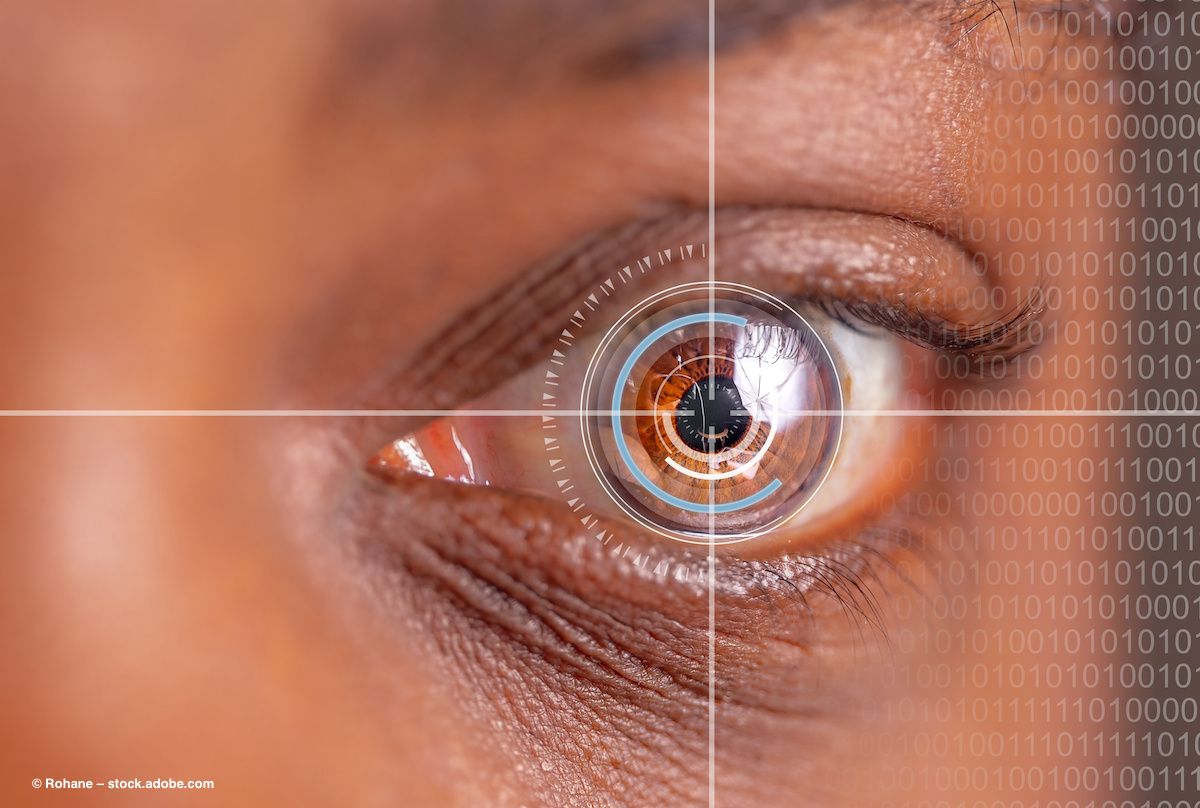
How are glaucoma suspects identified? Diagnosis typically involves a comprehensive eye examination that includes:
- Tonometry to measure intraocular pressure
- Ophthalmoscopy to examine the optic nerve
- Visual field testing to assess peripheral vision
- Gonioscopy to evaluate the angle where the iris meets the cornea
- Pachymetry to measure corneal thickness
- Optical coherence tomography (OCT) to analyze the optic nerve and retinal nerve fiber layer
These tests help eye care professionals identify risk factors and early signs that may indicate an increased likelihood of developing glaucoma.
Risk Factors and Prevalence of Glaucoma Suspects
Understanding the risk factors for being classified as a glaucoma suspect is crucial for early detection and prevention. What are the primary risk factors that contribute to this classification?
- Age: The risk increases significantly after age 40 and is even higher for those over 60
- Family history: Having a close relative with glaucoma increases the risk
- Race: African-Americans are at higher risk for open-angle glaucoma
- Medical conditions: Diabetes, high blood pressure, and heart disease can increase risk
- Eye conditions: Myopia, previous eye injuries, or certain eye surgeries can be risk factors
- Prolonged use of corticosteroids: Either oral or topical
How prevalent are glaucoma suspects in the population? While exact numbers can vary, it’s estimated that there are several million glaucoma suspects in the United States alone. This underscores the importance of regular eye examinations, especially for those with known risk factors.

Management and Monitoring of Glaucoma Suspects
The management of glaucoma suspects is a delicate balance between vigilant monitoring and avoiding unnecessary treatment. What approach do eye care professionals typically take?
For most glaucoma suspects, the initial approach is careful observation. This involves:
- Regular comprehensive eye exams, typically annual
- Periodic visual field tests
- Ongoing monitoring of intraocular pressure
- Repeated imaging of the optic nerve and retinal nerve fiber layer
In some cases, particularly those with higher risk or showing progression, preventive treatment may be recommended. This could include:
- Prescription eye drops to lower intraocular pressure
- Laser treatments in certain situations
- Lifestyle modifications to promote overall eye health
The decision to treat is based on a careful risk assessment that considers factors such as the patient’s age, overall health, and personal preferences.
Ocular Hypertension: A Key Subset of Glaucoma Suspects
Ocular hypertension is a condition where intraocular pressure is higher than normal, but no other signs of glaucoma are present. Why is this condition significant in the context of glaucoma suspects?

Individuals with ocular hypertension are often classified as glaucoma suspects due to their increased risk of developing the disease. Key points about ocular hypertension include:
- It’s defined as IOP consistently above 21 mm Hg
- Not all people with ocular hypertension will develop glaucoma
- The risk of progression to glaucoma is about 1-2% per year without treatment
- Treatment can reduce this risk by about 50%
Management of ocular hypertension, like other glaucoma suspect cases, involves regular monitoring and a personalized risk assessment to determine if treatment is necessary.
The Role of Technology in Monitoring Glaucoma Suspects
Advancements in medical technology have significantly improved our ability to detect and monitor early signs of glaucoma. What cutting-edge tools are being used in the management of glaucoma suspects?
Optical Coherence Tomography (OCT)
OCT provides high-resolution, cross-sectional images of the retina and optic nerve. This technology allows for:
- Precise measurement of retinal nerve fiber layer thickness
- Early detection of structural changes in the optic nerve
- Monitoring of subtle changes over time
Visual Field Testing
Advanced computerized visual field testing helps detect functional vision loss. Modern perimetry techniques offer:

- More sensitive detection of early visual field defects
- Ability to track changes in visual field over time
- Comparison with age-matched normative databases
Corneal Hysteresis Measurement
This relatively new technology measures the cornea’s ability to absorb and dissipate energy. It can provide additional information about:
- Risk of glaucoma progression
- Accuracy of IOP measurements
These technological advancements allow for more precise monitoring of glaucoma suspects, enabling earlier detection of progression to glaucoma and more timely intervention when necessary.
Living as a Glaucoma Suspect: Lifestyle and Prevention
Being classified as a glaucoma suspect doesn’t necessarily mean a person will develop glaucoma, but it does call for increased vigilance and proactive measures. What can individuals do to maintain their eye health and potentially reduce their risk?
Regular Eye Exams
Consistent follow-up with an eye care professional is crucial. This typically involves:
- Annual comprehensive eye exams
- More frequent visits if recommended by the doctor
- Prompt attention to any new eye symptoms or vision changes
Healthy Lifestyle Choices
Certain lifestyle factors can contribute to overall eye health:

- Maintaining a balanced diet rich in vitamins A, C, and E
- Regular exercise, which may help reduce intraocular pressure
- Avoiding smoking
- Protecting eyes from UV radiation with sunglasses
Stress Management
Some studies suggest a potential link between stress and intraocular pressure. Stress reduction techniques may be beneficial:
- Meditation and mindfulness practices
- Yoga or tai chi
- Adequate sleep and rest
Medication Awareness
Being aware of medications that can affect eye pressure is important:
- Inform all healthcare providers about glaucoma suspect status
- Be cautious with over-the-counter medications, especially those containing steroids
- Discuss potential eye-related side effects of any new medications with a doctor
By adopting these practices, glaucoma suspects can play an active role in maintaining their eye health and potentially reducing their risk of developing glaucoma.
Psychological Impact of Being a Glaucoma Suspect
The classification as a glaucoma suspect can have psychological implications for some individuals. How does this label affect people, and what strategies can help in coping with the uncertainty?

Emotional Responses
Common emotional reactions to being labeled a glaucoma suspect may include:
- Anxiety about potential vision loss
- Frustration with the need for ongoing monitoring
- Uncertainty about the future
Coping Strategies
Several approaches can help individuals manage the emotional aspects of being a glaucoma suspect:
- Education: Understanding the condition and treatment options can reduce anxiety
- Support groups: Connecting with others in similar situations can provide emotional support
- Open communication with healthcare providers: Discussing concerns and questions can alleviate fears
- Focusing on proactive measures: Engaging in positive lifestyle changes can provide a sense of control
Balancing Vigilance and Quality of Life
It’s important for glaucoma suspects to find a balance between necessary vigilance and maintaining a good quality of life. This may involve:
- Setting realistic expectations about the monitoring process
- Integrating eye care into overall health routines
- Maintaining perspective on the generally good prognosis for most glaucoma suspects
By addressing the psychological aspects alongside the physical monitoring, individuals can better navigate the experience of being a glaucoma suspect.
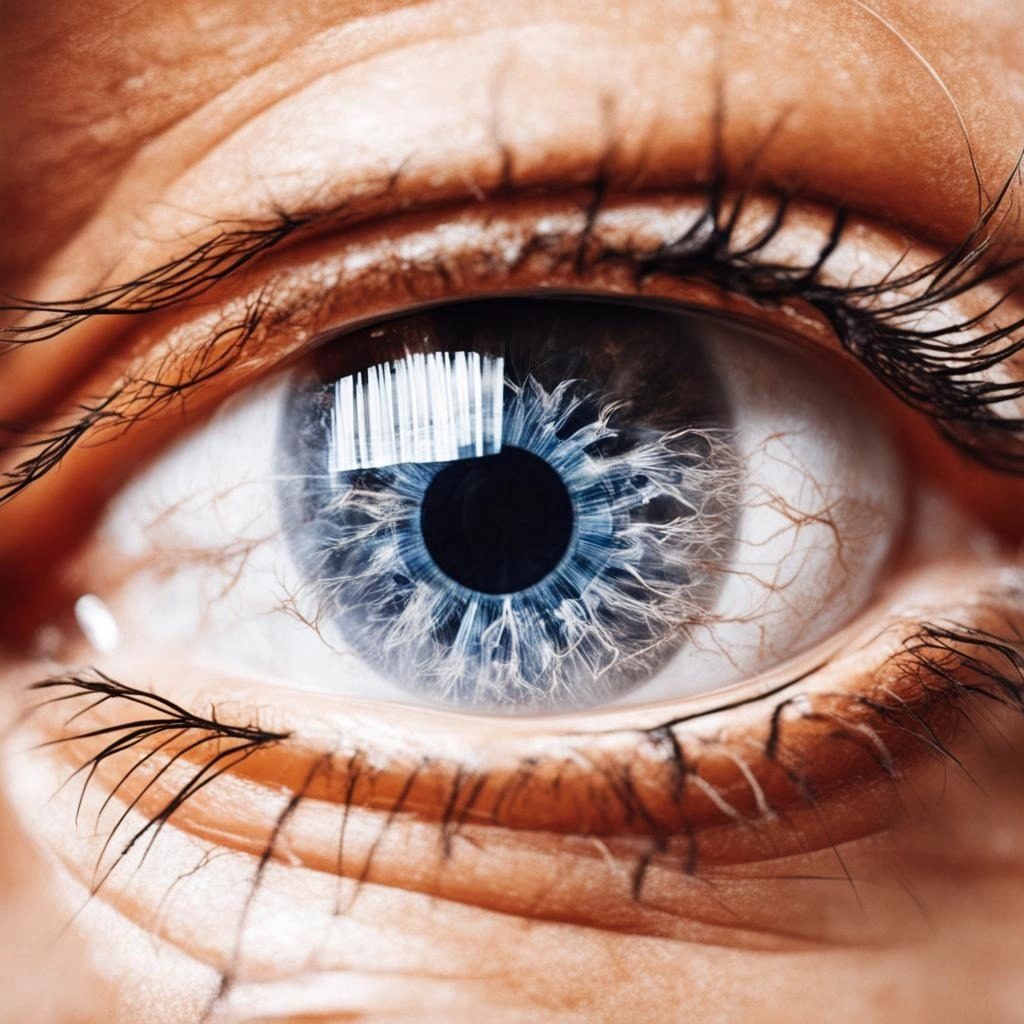
What is a Glaucoma Suspect?
If you’ve been told you are a glaucoma suspect, you’re in good company — there are several million glaucoma suspects in the USA.
Three million persons have both structural injury to the optic nerve head inside the eye and functional damage measured in their visual field test, and that qualifies them as having glaucoma.
Glaucoma suspects, on the other hand, have some risk of the disease, but no proven damage (yet). The majority of suspects will never become damaged. But, once vision is lost, we can’t restore it, so the key is to decide whom to treat among suspects.
There are 2 types of glaucoma, open-angle and angle-closure, and suspects for each are different. Open-angle suspects have one or more eye findings that suggest a higher risk of having or developing glaucoma than the average person.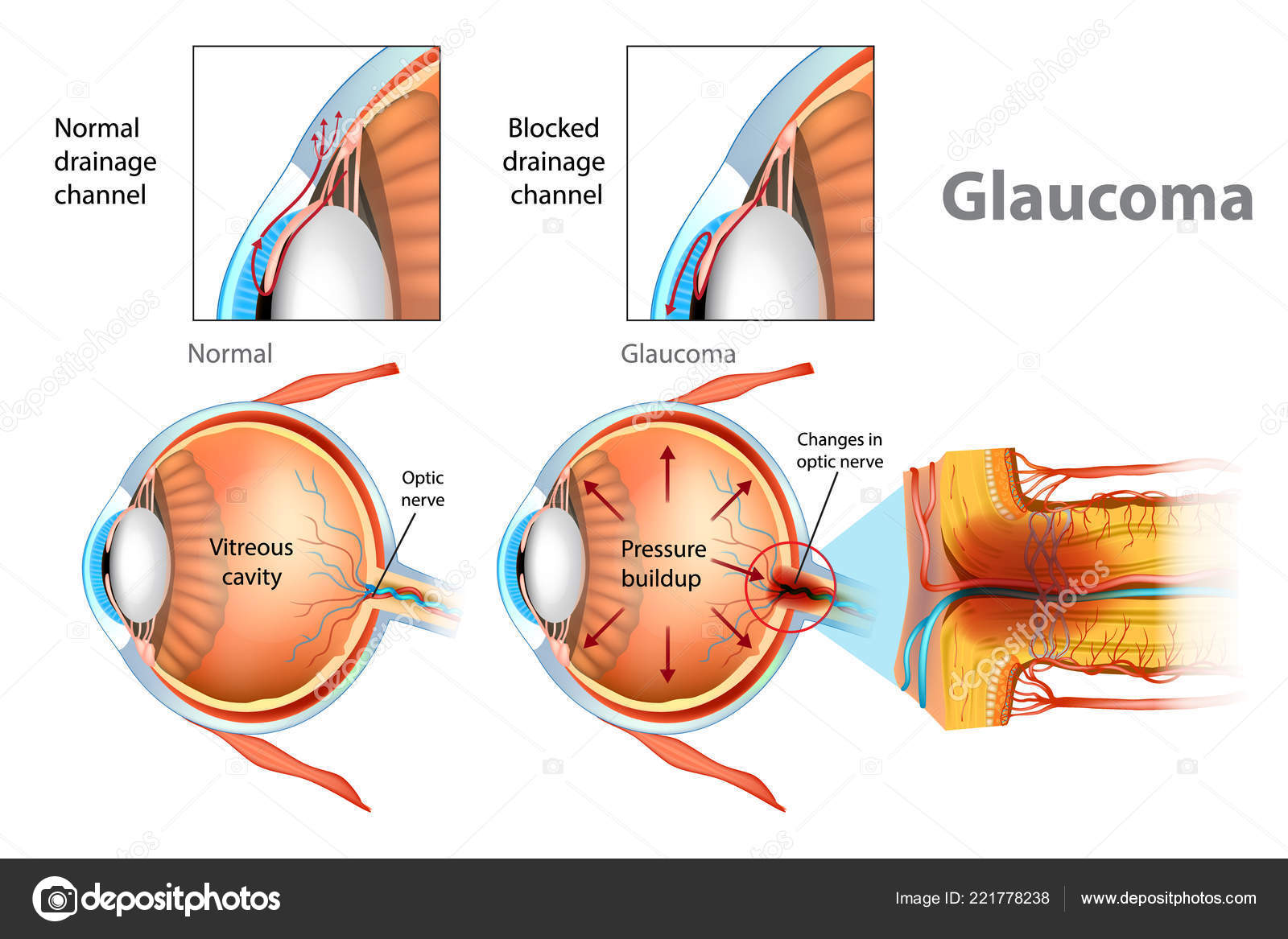 First, their measured eye pressure (IOP) can be higher than the average range.
First, their measured eye pressure (IOP) can be higher than the average range.
Glaucoma damage happens when the IOP is too high for the continued health of the optic nerve. Each person has their own level at which damage can occur. While anyone is in danger at very high IOP, half of those with open-angle glaucoma are hurt by IOP within the average range. Previously, this was called “normal-tension” glaucoma, but we now know it’s quite common and simply means that a person can get glaucoma without high IOP.
Suspects with higher than average IOP, but no damage, are called ocular hypertensive. In some eyes, the real IOP is lower than what’s measured because the cornea (the clear front of the eye) is thicker than average.
Risk Calculation
A large clinical trial study found that ocular hypertensives develop true glaucoma at a rate of about 2% per year. The rate was only half as fast if eye drops to lower IOP were taken. So the risk is small, but it’s cut in half by IOP-lowering treatment. How do you and the doctor decide then whether to treat ocular hypertension? It depends on a risk calculation that includes life expectancy, IOP level and other reasons that you can be a suspect. These include:
How do you and the doctor decide then whether to treat ocular hypertension? It depends on a risk calculation that includes life expectancy, IOP level and other reasons that you can be a suspect. These include:
- having a blood relative with glaucoma damage
- having optic nerve or visual field findings on the border between glaucoma and normal
- African-American ethnicity
- being myopic (near-sighted)
- having a thin cornea
- having conditions called exfoliation or pigment dispersion that increase the risk of developing high IOP
Neither the suspect who chooses treatment nor the one who stays off treatment is making a bad choice. It should be a shared decision between doctor and patient, depending on actual risk and individual risk tolerance.
If you are someone who accepts risk easily, no immediate treatment is fine if risk is average. But, some people would lose sleep over possible damage, and for them trying treatment is a good option. Others are more worried by possible side effects of treatment—for these, the low level of worsening in untreated eyes is not that scary and no treatment is the right choice. Life expectancy is part of the decision—if you have significant risk and are relatively young, your chance of becoming damaged during life is greater, and treatment makes more sense. Treatment or not, suspects need detailed monitoring of disc and field every year.
Others are more worried by possible side effects of treatment—for these, the low level of worsening in untreated eyes is not that scary and no treatment is the right choice. Life expectancy is part of the decision—if you have significant risk and are relatively young, your chance of becoming damaged during life is greater, and treatment makes more sense. Treatment or not, suspects need detailed monitoring of disc and field every year.
If glaucoma is caught when the signs are very early and treatment begun at that time, the risk of developing serious visual loss is quite small.
—
Article by Harry A. Quigley, MD — the A. Edward Maumenee Professor and Director of the Glaucoma Center of Excellence at the Wilmer Eye Institute at Johns Hopkins, in Baltimore, Maryland. Dr. Quigley has participated in glaucoma studies worldwide and published over 350 peer-reviewed articles. Originally published in September 2013 with the title “Round Up the Usual Suspects!”
Glaucoma Suspect | Glaucoma Australia
Clinicians will refer to someone as a ‘glaucoma suspect’ if they think the person might be showing early signs of glaucoma but they are not yet sure.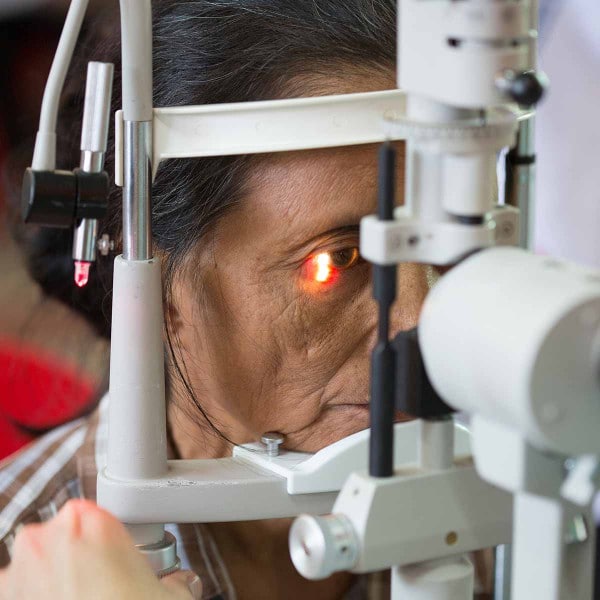 Many people suspected of having glaucoma at this stage turn out not to have it at all, but some do develop it in time and it is these people who can benefit the most from timely treatment.
Many people suspected of having glaucoma at this stage turn out not to have it at all, but some do develop it in time and it is these people who can benefit the most from timely treatment.
If someone has a very high intraocular pressure or very advanced optic nerve damage then the diagnosis of glaucoma is usually straightforward. However sometimes it is not entirely clear whether someone has glaucoma or not. The early signs of glaucoma can be subtle, and many glaucoma patients have a normal pressure.
Who is at risk?
Older individuals and individuals with a family history of glaucoma.
Symptoms
Glaucoma suspects have no symptoms to suggest eye disease. They are usually identified as glaucoma suspects during routine checks by their optometrist.
Detection
There is no single test that is 100% effective in confirming the diagnosis of glaucoma all the time. Sometimes the only way to be sure that someone has glaucoma is to arrange follow up examinations (every 4-6 months or so) to work out whether progressive damage is occurring to the optic nerve in one or both eyes. Features in the examination which might lead to a patient being classified as a glaucoma suspect include:
Features in the examination which might lead to a patient being classified as a glaucoma suspect include:
- A high pressure within the eyeball but with no optic nerve damage yet (this is also referred to as ocular hypertension)
- A ‘suspicious’ optic disc appearance on examination such as ‘cupping’ of the disc or thinning of the neuro-retinal rim or nerve fibre layers.
These are changes that can be seen with glaucoma, but can also be seen in other conditions such as myopia where it may be a variation of normal.
Other risk factors for glaucoma such as a strong family history but without definite changes to the optic nerve as yet. Generally speaking, glaucoma suspects will not show any visual field defects on testing, or may show some field defects which are not yet entirely convincing as evidence of glaucoma.
Treatment
Usually a person thought to be a glaucoma suspect will not be treated for the condition until the diagnosis is confirmed.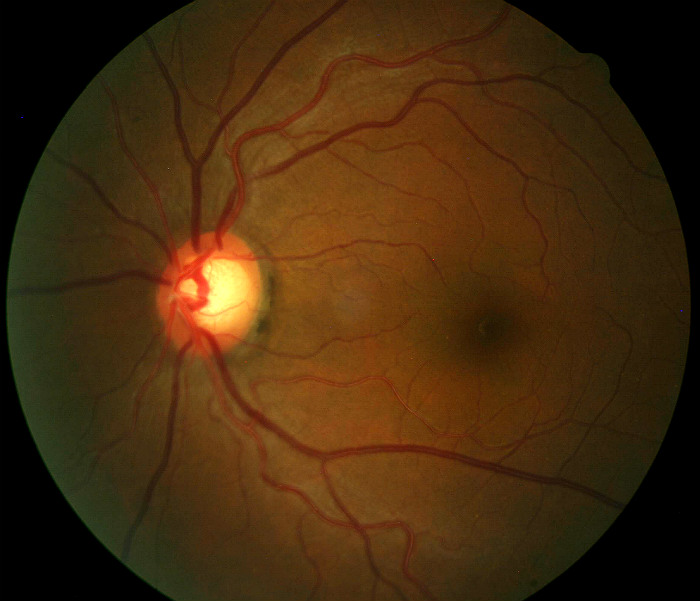 Typically, glaucoma advances slowly so its progress can be tracked safely without treatment until the diagnosis is confirmed.
Typically, glaucoma advances slowly so its progress can be tracked safely without treatment until the diagnosis is confirmed.
Ongoing Management
It is very important that someone suspected of experiencing the early onset of glaucoma has regular checks to make sure there is no continuing damage to the optic nerve. Even though a person is not yet receiving any treatment for the condition, she or he may still risk losing their vision if in fact they do turn out to have glaucoma.
Glaucoma Signs & Symptoms: Early Clues
Glaucoma is a leading cause of blindness worldwide. Although anyone can get glaucoma, older adults are at higher risk of developing it.
What is glaucoma?
Glaucoma is a group of diseases that cause increased pressure in the eye, resulting in damage to the optic nerve that can lead to permanent vision loss. There are at least 60 different types of glaucoma.
Glaucoma affects about 3 million people in the U.S., but only half of those are aware they have it, according to the Glaucoma Research Foundation. This is because early signs and symptoms of glaucoma often go unnoticed.
This is because early signs and symptoms of glaucoma often go unnoticed.
Early diagnosis and treatment are important to slow the progression of glaucoma, which can affect one or both eyes. Read on to learn about steps you can take to help your aging loved one detect glaucoma early and prevent irreversible vision loss.
What are the first signs and symptoms of glaucoma?
There are several different types of glaucoma, but the most common type — open-angle glaucoma — usually doesn’t cause any signs, symptoms, or pain. This is why glaucoma is commonly known as “the sneak thief of sight.”
It’s critical to get regular eye exams by an ophthalmologist, an eye doctor who specializes in treating diseases and performing surgeries. This is especially important if you or your loved one are in a high-risk group (see below).
Signs and symptoms of open-angle glaucoma
In open-angle glaucoma, the most common type of glaucoma, the eye doesn’t drain fluid properly. Over time, eye pressure increases and damages the optic nerve.:max_bytes(150000):strip_icc()/GettyImages-173819292-56ace8a35f9b58b7d00acdd4.jpg)
This type of glaucoma happens gradually, and it usually doesn’t cause pain or vision changes at first. Vision loss associated with open-angle glaucoma begins with peripheral — or side — vision loss, but those who have it may not notice it until the damage to the optic nerve is significant.
Signs and symptoms of acute angle-closure glaucoma
Acute angle-closure glaucoma, also called closed-angle glaucoma or narrow-angle glaucoma, occurs when the iris blocks the eye’s drainage angle, making the eye pressure rise very quickly. Acute-angle closure glaucoma is especially common in older adults, particularly those who have untreated cataracts.
Acute angle-closure glaucoma is a medical emergency that can damage the optic nerve and cause permanent vision loss if it’s not treated promptly.
Go to the emergency room or see an ophthalmologist right away if you or your loved one experience these signs and symptoms:
- Blurred vision that happens suddenly
- Severe eye pain, often described as an intense, throbbing pain, along with reddening of the eye
- Headache around the eyes or the forehead
- Nausea and vomiting accompanied by severe eye pain
- Seeing halos around lights, such as rainbow-colored circles around lights or unusual sensitivity to lights
Angle-closure glaucoma can also progress gradually.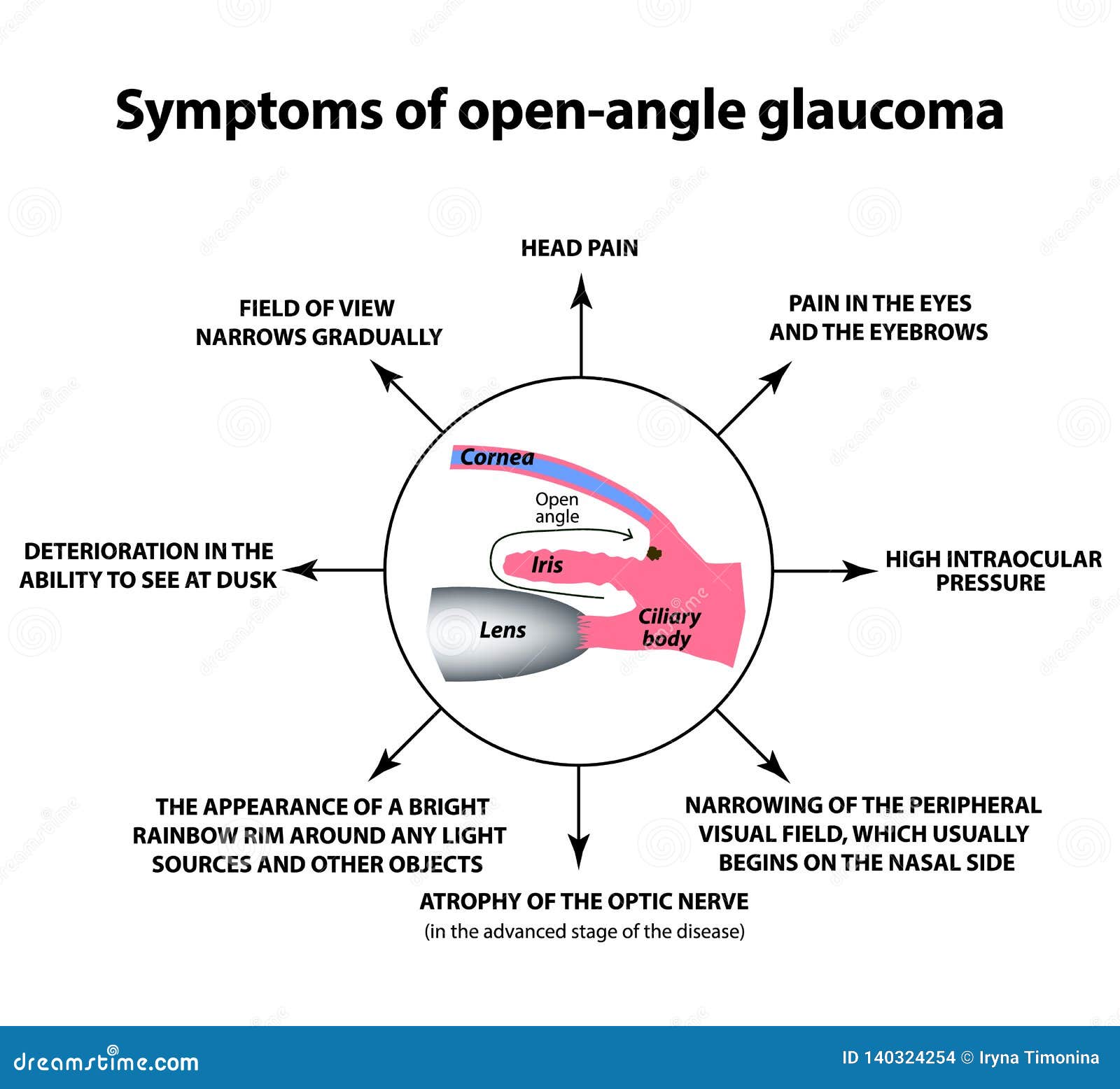 This type of glaucoma, called chronic angle-closure glaucoma, usually doesn’t cause symptoms until the damage to the optic nerve is severe or until an acute event occurs.
This type of glaucoma, called chronic angle-closure glaucoma, usually doesn’t cause symptoms until the damage to the optic nerve is severe or until an acute event occurs.
Are older adults at risk for glaucoma?
Anyone can get glaucoma, but seniors are at higher risk. Other risk factors for glaucoma include:
- Being older than 60, which increases your risk of glaucoma by six times
- Being African American and older than 40.
African Americans are six to eight times more likely to have glaucoma than Caucasians. - Being Hispanic and older than age 60
- Being of Asian descent, which increases your risk of angle-closure glaucoma
- Having a family history of glaucoma
Open-angle glaucoma, the most common type of glaucoma, is hereditary. - Having diabetes, which doubles your risk of having glaucoma.
- Having high blood pressure
- Using steroids
Studies show that people who use high dosages of steroid inhalers to control severe asthma are at increased risk of glaucoma.
- Having previous eye surgeries or injuries, especially blunt trauma that bruise the eye
- Being severely near-sighted
How to prevent glaucoma-related vision loss in seniors
Early detection and ongoing monitoring of eye health can help your aging loved one lower their risk of glaucoma-related vision loss.
Understand the risk factors for glaucoma
Do you have a family history of glaucoma? Does your elderly parent have diabetes or high blood pressure? Are they African American, Hispanic, or of Asian descent? If your loved one is at increased risk of glaucoma, they should have a comprehensive dilated eye exam. Talk to your ophthalmologist about how often your parent’s eyes should be checked.
Even if you or your loved one are not in a high-risk group, it’s still important to have a dilated eye screening by age 40. Early diagnosis and treatment of glaucoma can prevent the progression of the disease and prevent permanent vision loss.
Talk with a Senior Living Advisor
Our advisors help 300,000 families each year find the right senior care for their loved ones.
Connect Now
Manage diabetes and blood pressure
Talk to your aging parent about managing their diabetes, which includes monitoring blood pressure and keeping it under control. Don’t skip doctor’s appointments, and be sure to take medications as prescribed. Eating a healthy diet, staying physically active, and not smoking can help.
Manage and treat glaucoma
If your loved one has been diagnosed with glaucoma, it’s important to slow the progression of the disease by taking medications as prescribed by the doctor. Remind your parent to keep follow-up appointments and exams to help prevent any additional vision loss.
Glaucoma-related vision loss can affect quality of life and the ability to perform important, everyday tasks such as walking, reading, or driving. If your aging parent has glaucoma and needs help, consider whether moving to an assisted living community can allow them keep a certain level of independence while getting the help they need.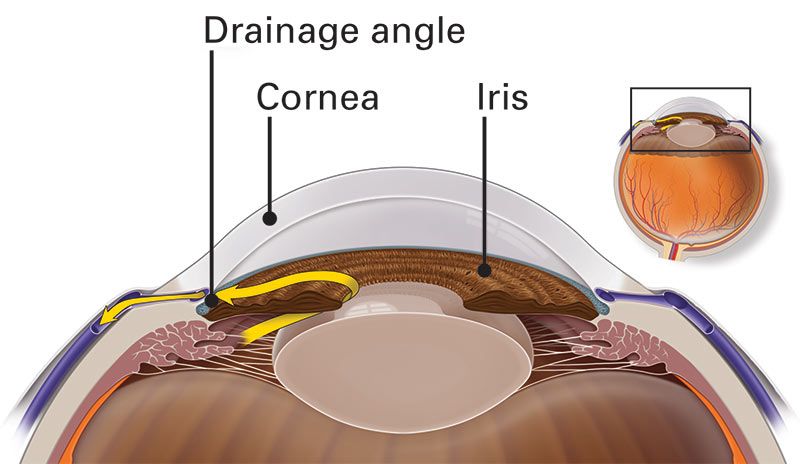
Sources:
American Academy of Ophthalmology: https://www.aao.org/eye-health/diseases/what-is-glaucoma
Glaucoma Research Foundation: https://www.glaucoma.org/gleams/what-are-the-symptoms-of-glaucoma.php
CDC: https://www.cdc.gov/features/glaucoma-awareness/index.html
Causes, Symptoms and Treatment Options
Medically reviewed by Drugs.com. Last updated on Feb 2, 2021.
What is Glaucoma?
Glaucoma is a common eye condition in which vision is lost because of damage to the optic nerve. The optic nerve carries information about vision from the eye to the brain. In most cases, the optic nerve is damaged when the pressure of fluid inside the front part of the eye rises. However, glaucoma-related eye damage can occur even when the fluid pressure is normal.
In the most common form of glaucoma, called primary open angle glaucoma, fluid circulates freely in the eye and the pressure tends to rise slowly over time. Gradual loss of vision is usually the only symptom.
Gradual loss of vision is usually the only symptom.
A less common form of the disease, called acute or angle closure glaucoma, develops suddenly and usually causes eye pain and redness. In this form of glaucoma, pressures rise quickly because normal fluid flow within the eye becomes blocked. This happens when a structure called the angle (where the iris and cornea meet) closes.
Experts are uncertain why either form of glaucoma damages the optic nerve. However, lowering the pressure inside the eye decreases the risk that further damage to the optic nerve will occur.
In addition to open angle and angle closure glaucoma, there are rarer forms of the illness. They may be related to eye defects that develop before birth (congenital glaucoma) or to eye injuries, eye tumors or medical problems such as diabetes. In some cases, medications, such as corticosteroids, also can trigger glaucoma.
Glaucoma is a leading cause of blindness in the United States.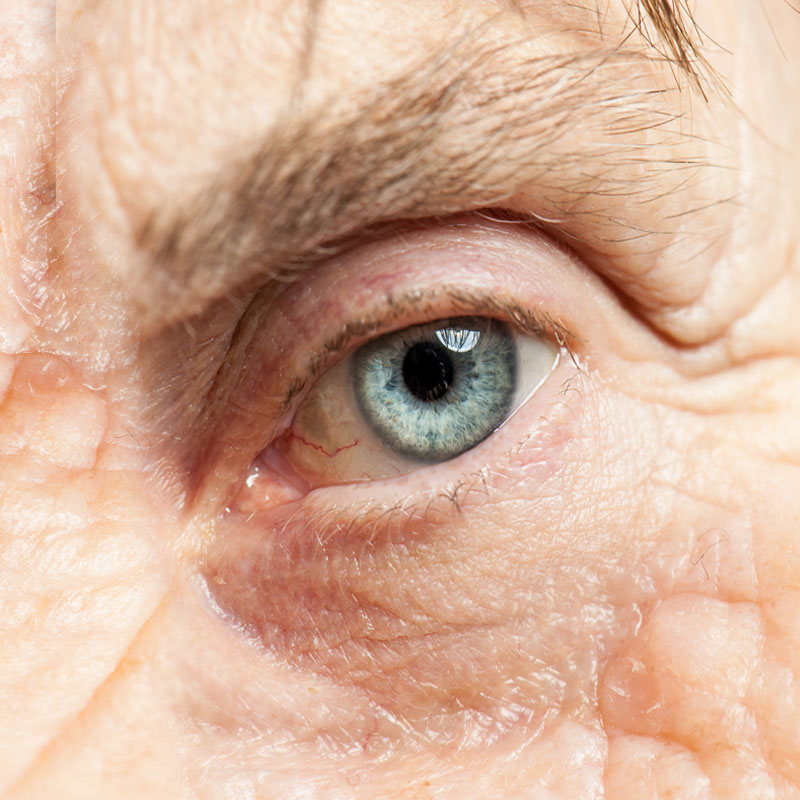 Up to half of people with glaucoma don’t know that they have the condition. Glaucoma tends to run in families. It is five times more common in African-Americans than in Caucasians. The risk of glaucoma also increases with age in people of all ethnic backgrounds.
Up to half of people with glaucoma don’t know that they have the condition. Glaucoma tends to run in families. It is five times more common in African-Americans than in Caucasians. The risk of glaucoma also increases with age in people of all ethnic backgrounds.
Symptoms
Although open angle glaucoma and acute glaucoma both cause blindness, their symptoms are very different.
- Open angle glaucoma — In this form of glaucoma, vision is lost painlessly and so gradually that most people do not realize they have a problem until substantial damage has occurred. Peripheral vision (at the edges) is usually lost first, especially the field of vision near your nose. As larger areas of your peripheral vision fade, you may develop tunnel vision — vision that has narrowed so you see only what is directly in front of you, like looking through a railroad tunnel. If glaucoma is not treated, even this narrowed vision disappears into blindness.
 Once gone, areas of lost vision cannot be restored.
Once gone, areas of lost vision cannot be restored. - Acute glaucoma (closed angle glaucoma) — Symptoms of acute glaucoma occur suddenly and can include blurred vision, pain and redness in the eye, severe headache, halos around lights at night, a haziness in the cornea (the clear front portion of the eye in front of the pupil), nausea and vomiting, and extreme weakness.
Diagnosis
In most cases, open angle glaucoma is diagnosed by a doctor during a routine eye examination. When looking at the back of the eye (fundus) using a special telescope, he or she may notice changes in the appearance of the optic nerve. If glaucoma is suspected, your doctor will confirm the diagnosis with one or more additional tests:
- Tonometry measures the pressure within the eye. This may be done by pressing an instrument against your eyeball, or by blowing a puff of air against your eye. Your eye pressure is measured in millimeters of mercury, commonly abbreviated as “mmHg.
 ” Normal eye pressure is between 8 mmHg and 22 mmHg.
” Normal eye pressure is between 8 mmHg and 22 mmHg. - Visual-field testing is the best way to find early signs of loss of peripheral vision. Most often, visual fields are checked using an automated machine. You look straight ahead into the machine and press a button when you see a blinking light. The machine then draws a picture of where you are able to see the blinking lights.
- OCT (Optical Coherence Tomography) exam. This technique uses a LASER beam to actually measure the thickness of the nerve fibers in the retina. Glaucoma causes loss of these nerve fibers.
Your doctor will not diagnose glaucoma unless your optic nerve shows evidence of damage. However, some people will be found to have elevated eye pressure but no evidence of optic nerve damage. In this case, you may be told that you are a “glaucoma suspect” or have “pre-glaucoma,” but do not yet have the disease. It is important to remember that not everyone with elevated pressures will develop glaucoma, and that not everyone with glaucoma has elevated eye pressures.
Angle closure glaucoma usually is diagnosed in a person who has developed a red, swollen eye and difficulties with vision. The eye pressure is usually quite high. Some people may be told by their eye doctor that they are at risk of angle closure glaucoma because their angle looks narrow.
Expected Duration
Glaucoma is a lifelong illness, but proper treatment can prevent loss of vision.
Prevention
In most people, glaucoma cannot be prevented. However, regular screening may help to identify people either with early stages of the disease or elevated eye pressures. Screening should be done by someone who is trained to recognize glaucoma, usually an ophthalmologist or optometrist.
There is no consensus about who should be screened for glaucoma. African Americans over age 40 have the highest risk of developing glaucoma. Family history of glaucoma and older age also increase your risk of the disease.
Medicare covers glaucoma screening for people with diabetes, a family history of glaucoma, or African-Americans who are age 50 and older.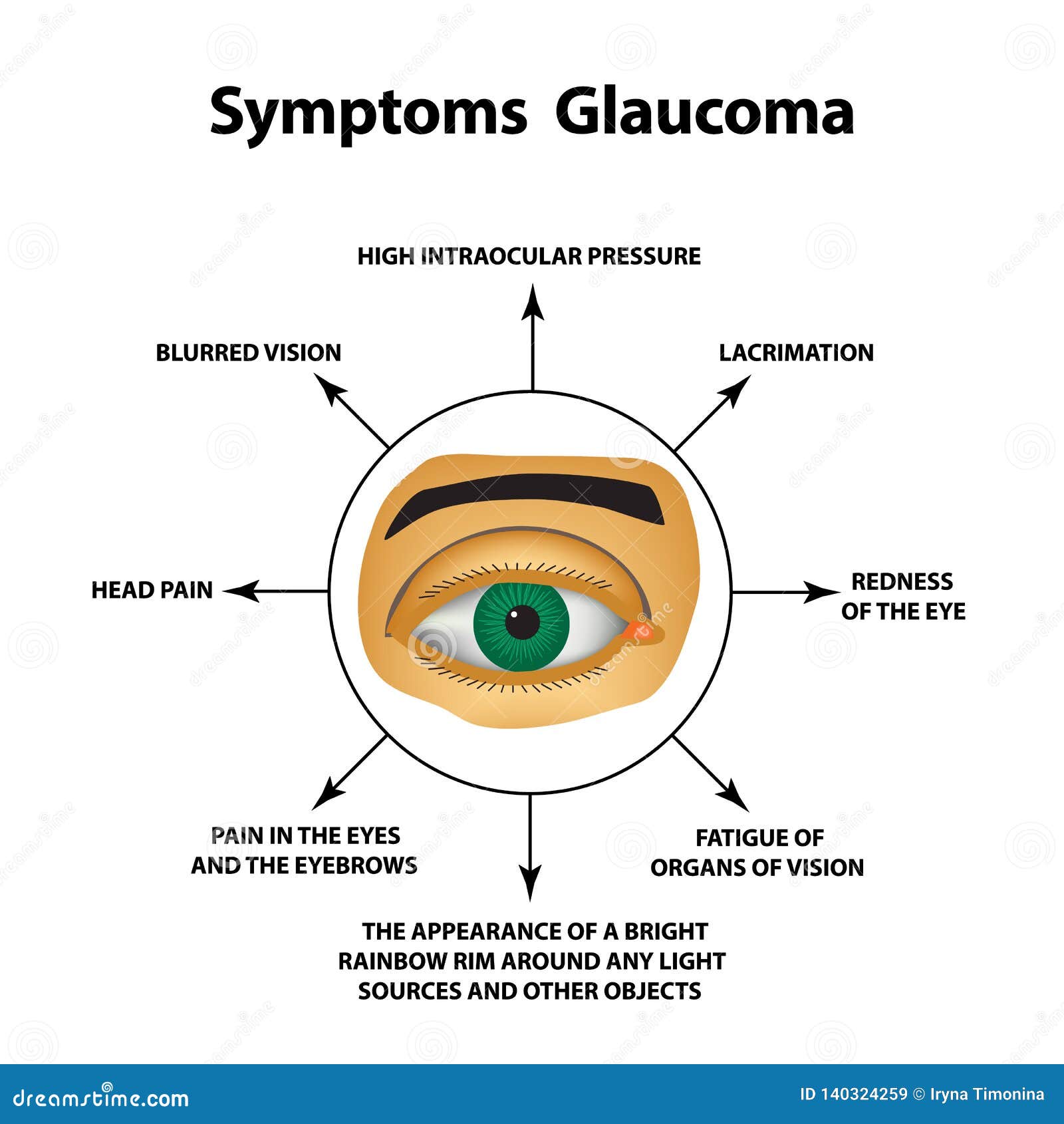
Treatment
In the United States, treatment of open angle glaucoma usually begins with prescription eye drops. These medicines lower pressure inside the eye.
As an alternative to medication or when medication fails to control glaucoma, laser therapy can be done. This procedure is called laser trabeculoplasty. Eye surgeons perform this procedure in the office or eye clinic. A high intensity beam of light is carefully aimed at openings in the eye’s drainage system. The laser widens the openings to increase fluid drainage from the eye.
Laser therapy may not lower eye pressure to acceptable levels. You may need to continue glaucoma eye drops after laser therapy.
If both medication and laser therapy are unsuccessful, conventional eye surgery may be necessary to make a new opening for fluid to leave the eye. Eye surgeons perform this procedure in the operating room. Intravenous medication is given to help you relax. Numbing medication is applied on and around the eye.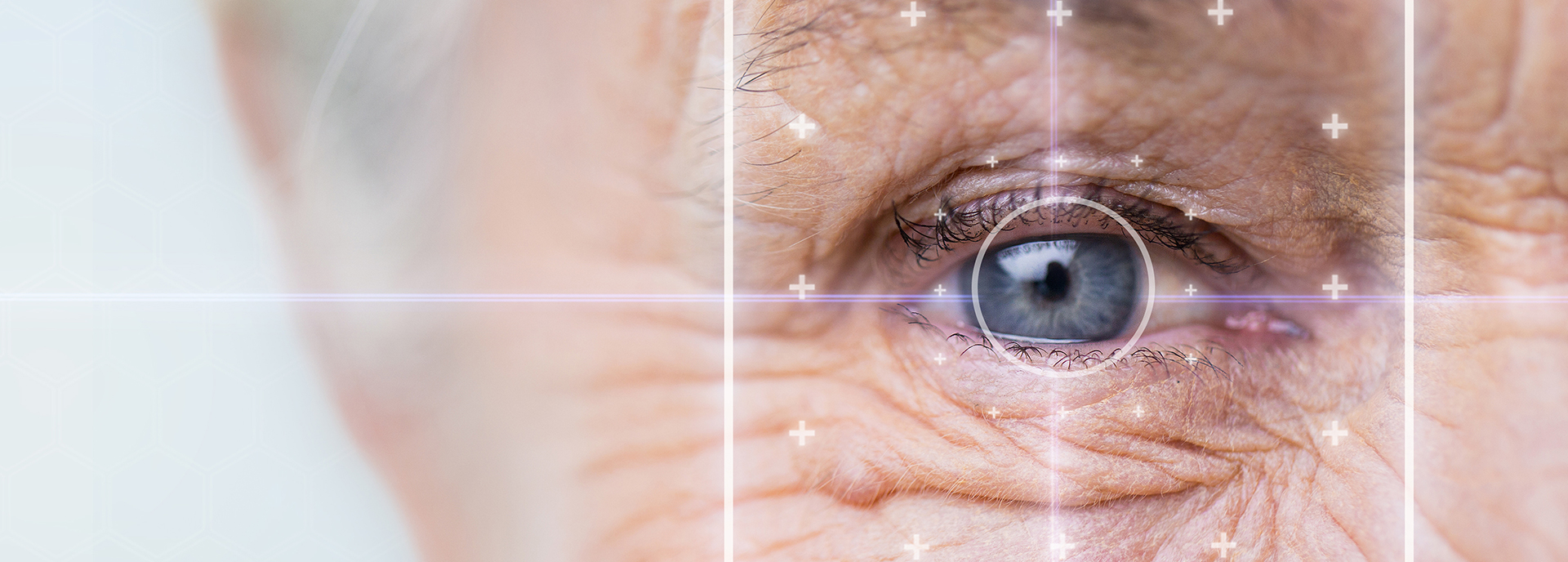 The surgeon creates a new opening to improve fluid drainage from the eye.
The surgeon creates a new opening to improve fluid drainage from the eye.
With both types of glaucoma surgery, eye pressure almost always decreases. But the pressure might not be low enough. You may need repeat surgery and/or need to continue long term use of glaucoma eye drops.
If you have been diagnosed with glaucoma, be sure to follow up regularly with your eye doctor. It is also important that you use your medication as directed. Many people do not follow through with treatment because they feel fine and do not notice the gradual loss of their vision. However, it is important to remember that glaucoma treatment prevents further damage to your eye, but will not restore vision that has already been lost.
Acute glaucoma must be recognized and treated within 24 hours to prevent loss of vision. Treatment usually begins with laser treatment to make a new opening in the iris that allows fluid to drain. This often cures the problem, but it sometimes is necessary to use eye drops long-term or to perform additional surgery.
This often cures the problem, but it sometimes is necessary to use eye drops long-term or to perform additional surgery.
When To Call A Professional
Call your doctor immediately if you notice any sudden loss of your vision, especially if you also have any pain or redness in the eye. Acute glaucoma is a sight-threatening medical emergency that requires immediate treatment to prevent blindness.
Prognosis
The outlook depends on the type of glaucoma:
- Open angle glaucoma — Proper treatment greatly reduces the risk of vision loss in people with open angle glaucoma. However, if glaucoma remains untreated, permanent blindness can occur.
- Acute glaucoma — If an episode of acute glaucoma is treated early, vision in the affected eye may return to a level that is almost the same as what it was before the episode began. If acute glaucoma is neglected, you can become blind in the affected eye within two days or less.

Learn more about Glaucoma
Associated drugs
IBM Watson Micromedex
Mayo Clinic Reference
Medicine.com Guides (External)
External resources
National Eye Institute
http://www.nei.nih.gov/
Further information
Always consult your healthcare provider to ensure the information displayed on this page applies to your personal circumstances.
Medical Disclaimer
Glaucoma Suspect or Glaucoma Patient?
Early detection of glaucoma is essential to preserving patients’ functional vision. Piecing together the most appropriate assessment after weighing all the data collected is an art that is in many ways unique to glaucoma. The decision to categorize the patient as a glaucoma suspect as opposed to a patient with definitive glaucoma can be challenging, especially when the patient is new to the clinic. Clinical experience is an important asset. I often return to the description of glaucoma as a neurodegenerative disease that presents itself at various stages of a continuum.1
Clinical experience is an important asset. I often return to the description of glaucoma as a neurodegenerative disease that presents itself at various stages of a continuum.1
If a patient is a glaucoma suspect, the next most important factor to clearly identify is the risk of his or her progression to glaucoma. Is this patient a high-risk glaucoma suspect or at low risk of developing glaucoma? If the patient has definitive glaucoma, what is the most accurate placement of this patient on the glaucoma continuum?
Putting the patient in the right bucket—glaucoma patient versus glaucoma suspect—and understanding the overall risk to functional vision begins with basic yet important investigations. This article reviews some of the factors that I consider with every patient who comes into my clinic for a glaucoma evaluation.
HIGHEST MEASURED IOP (T-MAX)
A patient with a moderately high IOP can often be one who needs only careful surveillance. This is often the case in the early postoperative period after routine or complex surgery. Understanding the setting in which that T-max reading was collected is crucial. If we measure and document a high T-max without significant precipitating factors, it becomes an important reference point for effectiveness of treatment if the patient goes on to develop glaucoma.
Understanding the setting in which that T-max reading was collected is crucial. If we measure and document a high T-max without significant precipitating factors, it becomes an important reference point for effectiveness of treatment if the patient goes on to develop glaucoma.
In the absence of additional risk factors, T-max is a strong indicator that a patient is at risk of developing preperimetric glaucoma. IOP is the only modifiable risk factor for glaucoma. Flattening the IOP diurnal curve and minimizing spikes is crucial for preservation of the optic nerve.
I look forward to publication of more data on the accuracy of at-home IOP-monitoring devices. If we could have patients coming to us with a 3-month report of daily IOP measurements rather than one data point twice a year, that would significantly help us fine-tune our treatments and match patients with IOP-lowering drops that might have a greater impact during the times of day that the patient is most at risk.
FAMILY HISTORY
Does the patient have a family history of glaucoma? If so, do his or her parents have glaucoma, and how many siblings have glaucoma? For example, if a patient’s father and two of five siblings have glaucoma, I would monitor the patient more closely in the absence of pertinent clinical findings, compared with a patient who might have the same risk factors but no family history.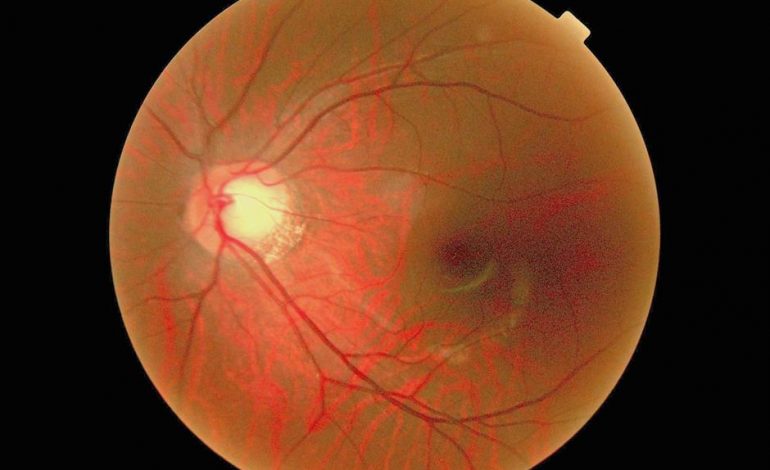 As I review the charts of my patients who fall into this category of glaucoma suspects (with notable family history, yet no definitive signs confirming conversion to glaucoma), there is a common factor that ends up playing a key role in the decision to treat: accurate IOP measurement. I often find a significant discrepancy when I retest it myself. There are many reasons why it might be inaccurately measured, including deep, inset globe; strong orbicularis; or anxiety, but I find the most common reason to be staff turnover. Technicians who are not yet fully trained can misread this critical data point. As providers, we have to be vigilant here. Following these patients every 6 months is reasonable, and I make sure to measure IOP a second time myself. IOP is still our single modifiable risk factor in glaucoma, so we had better start with an accurate data point.
As I review the charts of my patients who fall into this category of glaucoma suspects (with notable family history, yet no definitive signs confirming conversion to glaucoma), there is a common factor that ends up playing a key role in the decision to treat: accurate IOP measurement. I often find a significant discrepancy when I retest it myself. There are many reasons why it might be inaccurately measured, including deep, inset globe; strong orbicularis; or anxiety, but I find the most common reason to be staff turnover. Technicians who are not yet fully trained can misread this critical data point. As providers, we have to be vigilant here. Following these patients every 6 months is reasonable, and I make sure to measure IOP a second time myself. IOP is still our single modifiable risk factor in glaucoma, so we had better start with an accurate data point.
Similarly, it is helpful to find out the severity of disease in family members. For example, has the father had multiple glaucoma surgeries? Is there blindness due to glaucoma in the family? I often find that patients I have been treating for years also have family members who have a history of trabeculectomy or tube shunt and are seeing our glaucoma surgeons.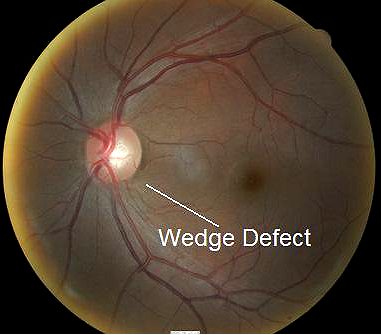 This is another factor in my mind that is a reminder to stay ahead of IOP fluctuations in these patients because they’ve had family members with glaucoma that was aggressive enough to cause blindness and require surgery.
This is another factor in my mind that is a reminder to stay ahead of IOP fluctuations in these patients because they’ve had family members with glaucoma that was aggressive enough to cause blindness and require surgery.
SYSTEMIC HEALTH
Evaluate the patient’s blood pressure and body mass index, and ask whether the patient has obstructive sleep apnea (OSA). Symptoms of OSA can be underreported by patients, contributing to its underdiagnosis and undertreatment.2 Multiple clinical studies have identified a higher prevalence of glaucoma in patients with OSA.2
If the patient does have this condition, it’s important to try to understand whether the patient is compliant with his or her OSA treatment. In my experience, patients who report inconsistent compliance or noncompliance with OSA treatment are likely to behave the same way regarding a glaucoma therapeutic regimen.
PREVIOUS REFRACTIVE SURGERY
In patients with previous refractive surgery, double-check to make sure your tech team is not just pulling forward old pachymetry readings.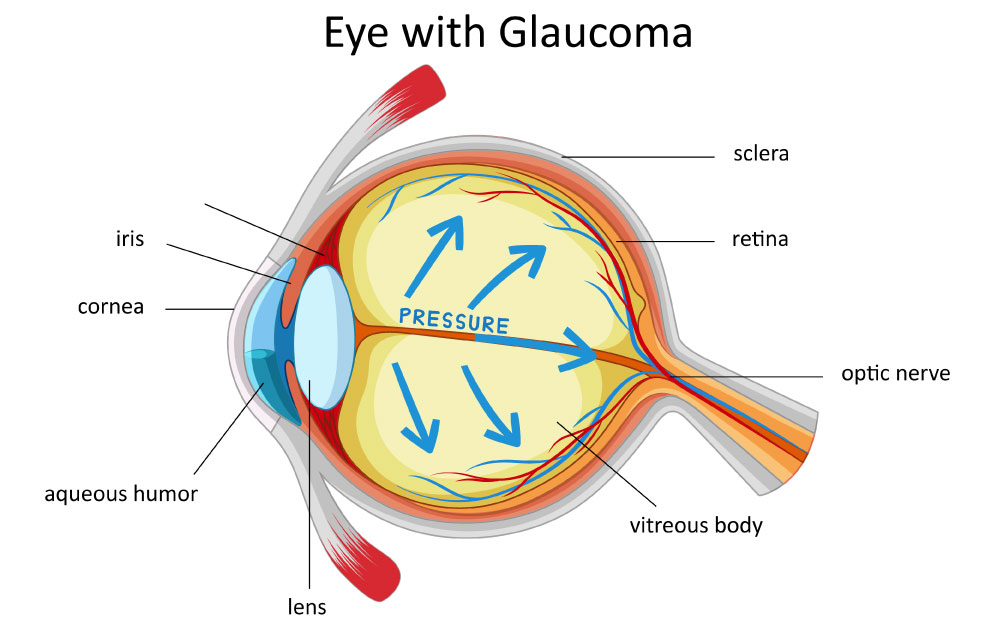 If this is overlooked, it can have significant implications in risk factor calculations. An accurate pachymetry reading is essential in the list of considerations that we calculate when considering the initiation of treatment. Treatment for a particular patient may have been more appropriate earlier when his or her central corneal thickness was thinner.
If this is overlooked, it can have significant implications in risk factor calculations. An accurate pachymetry reading is essential in the list of considerations that we calculate when considering the initiation of treatment. Treatment for a particular patient may have been more appropriate earlier when his or her central corneal thickness was thinner.
TARGET IOP
When you initiate treatment for a patient with glaucoma or ocular hypertension, it is important to set an appropriate target IOP. Use the target as a reference point for nerve fiber layer and visual field stability.
When IOP-lowering treatment is initiated, define a target IOP, but remember that it isn’t set in stone. This is important for long-term preservation of functional vision. For example, if a goal of 20% reduction in IOP is achieved in treatment of an early glaucoma patient, but progressive visual field changes are detected on follow-up, the clinician should react to these changes and lower the IOP further.
Sometimes the clinician may inherit a glaucoma patient from another practitioner or see a patient for an interim IOP check and note that the target pressure has not been achieved. In these instances, we need to stick to the previously defined target, even if there hasn’t been any vision loss since the last visit. If we’ve carefully considered the severity level of the glaucoma patient, the T-max, the patient’s age, and his or her glaucoma risk factors, use of a target pressure should be considered the standard of care.
THREE QUESTIONS
I find that the considerations discussed above are crucial in helping me understand the following three mandatory questions for every glaucoma patient:
Question No. 1. What is this patient’s risk of developing glaucoma?
Question No. 2. What is this patient’s risk of functional impairment due to glaucoma?
Question No. 3. What are the best treatment options for this patient?
With an expanding set of treatment options available to us, IOP-lowering drops may not always be the best first choice for many older patients.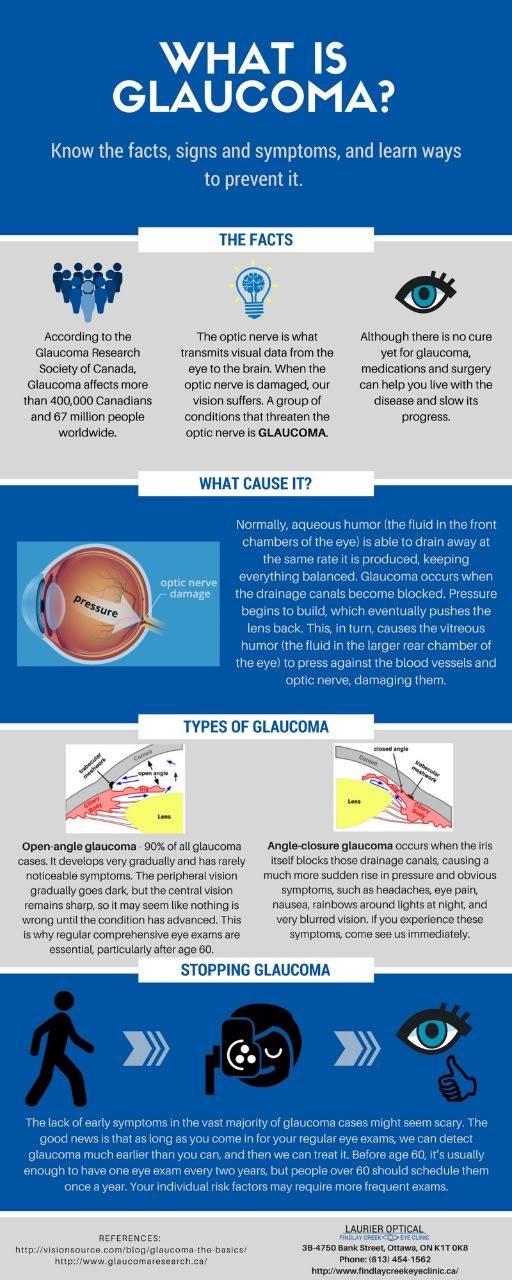 Optometrists are well positioned to discuss microinvasive glaucoma surgery options with patients.
Optometrists are well positioned to discuss microinvasive glaucoma surgery options with patients.
In addition to the considerations above, adherence to topical medication regimens is still a key factor for vision preservation in glaucoma.4 Unfortunately, we’ve all had patients lose vision to glaucoma. As I look back at my charts for these patients, deviation outside of the target determined to be a safe IOP is common. But sadly, I also often see notes in these patients’ charts referring to suboptimal compliance. This is especially frustrating when patients lose vision.
When I prescribe drops, I try to get ahead of potential tolerability issues by stressing to the patient the importance of communicating any symptoms back to my office. This is particularly vital at the beginning. Despite our best efforts, sometimes patients will come in for a 3-month IOP check with uncontrolled IOP because they stopped their medications due to intolerance.
One of the best indicators that a patient may be at risk of drop intolerance is the presence of ocular surface disease (OSD).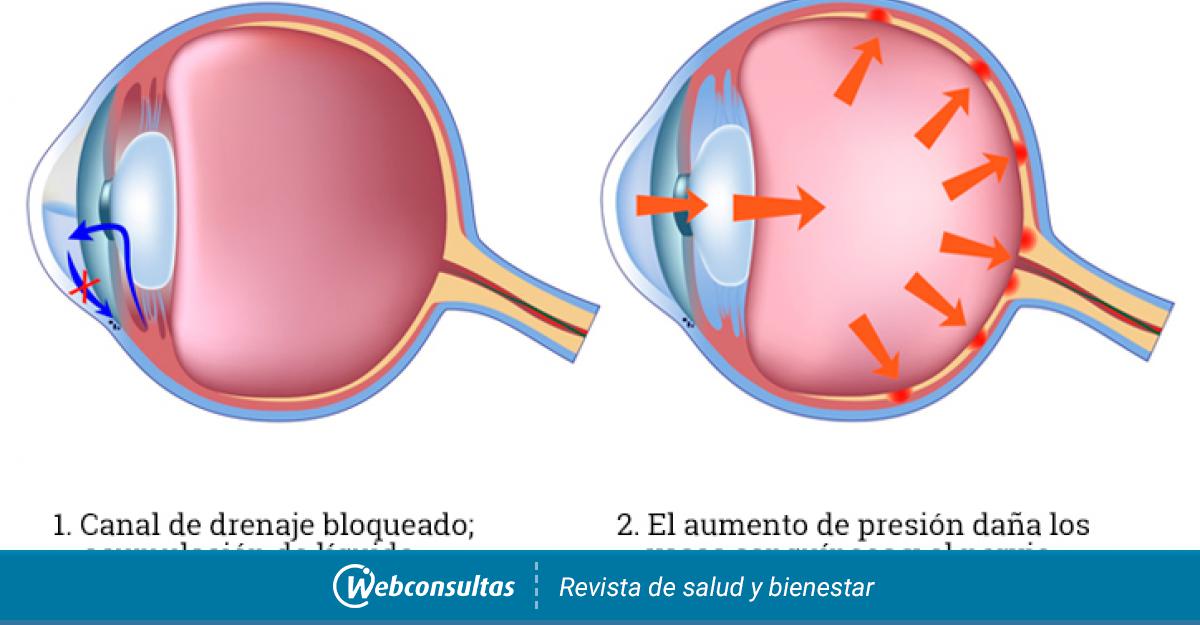 This is best identified in a thorough initial assessment. I treat OSD aggressively in all of my glaucoma patients for this reason. It helps to have patients come in for an initial, separate visit focusing on their OSD so that we can spend the appropriate time identifying and discussing the OSD treatment strategy.
This is best identified in a thorough initial assessment. I treat OSD aggressively in all of my glaucoma patients for this reason. It helps to have patients come in for an initial, separate visit focusing on their OSD so that we can spend the appropriate time identifying and discussing the OSD treatment strategy.
This can also be a balancing act, as OSD therapy itself can add up and can become onerous and costly. However, this emphasis on OSD can be worth the effort. In my experience, it is often the case that patients can be at risk of vision loss because of failure to use IOP-lowering drops due to OSD-related issues.
IT PAYS TO KNOW
Glaucoma is a complex disease that requires vigilance and dutiful preparation in order to arrive at the best treatment plan. Patients with mild glaucoma require significant attention to keep them in that category. The first step is accurately determining whether your patient is a suspect or a verified glaucoma patient. If you master this critical skill, you’ll have a stronger chance of keeping your patients at the mild severity level and helping them live full, productive lives, even if they develop glaucoma eventually.
Ahmad M. Fahmy, OD, FAAO, Dipl ABO
- Director of Optometric Services, Minnesota Eye Consultants, Bloomington and Minnetonka, Minnesota
- [email protected]
- Financial disclosure: None
Glaucoma – Roswell Eye Clinic
Different Forms of Glaucoma
Primary Open-Angle Glaucoma (POAG) is the most common form of glaucoma. With POAG the fluid pressure inside the eye increases. This increase in pressure may cause progressive damage to the optic nerve. POAG develops slowly and without any symptoms at first. Unfortunately, many people are not aware they have the condition until they have significant vision loss.
Unfortunately, many people are not aware they have the condition until they have significant vision loss.
Normal Tensive Glaucoma occurs when eye pressure remains within the “normal” range (under 21mmHg), but the optic nerve is damaged nevertheless. It is not known why this happens. People with low-tension glaucoma have an abnormally sensitive optic nerve.
Acute Angle-Closure Glaucoma (i.e. Narrow-Angle Glaucoma) is a less common type of glaucoma. It usually occurs abruptly due to a rapid increase of pressure secondary to a blockage of the drainage structure in the eye. Symptoms may include severe eye pain, nausea, redness in the eye, seeing halos or colored rings around lights and blurred vision. This is a medical emergency that can cause severe vision loss within a day of its onset. See your eye doctor immediately if you experience these symptoms.
Secondary glaucoma is a type of glaucoma resulting from an injury or other eye disease.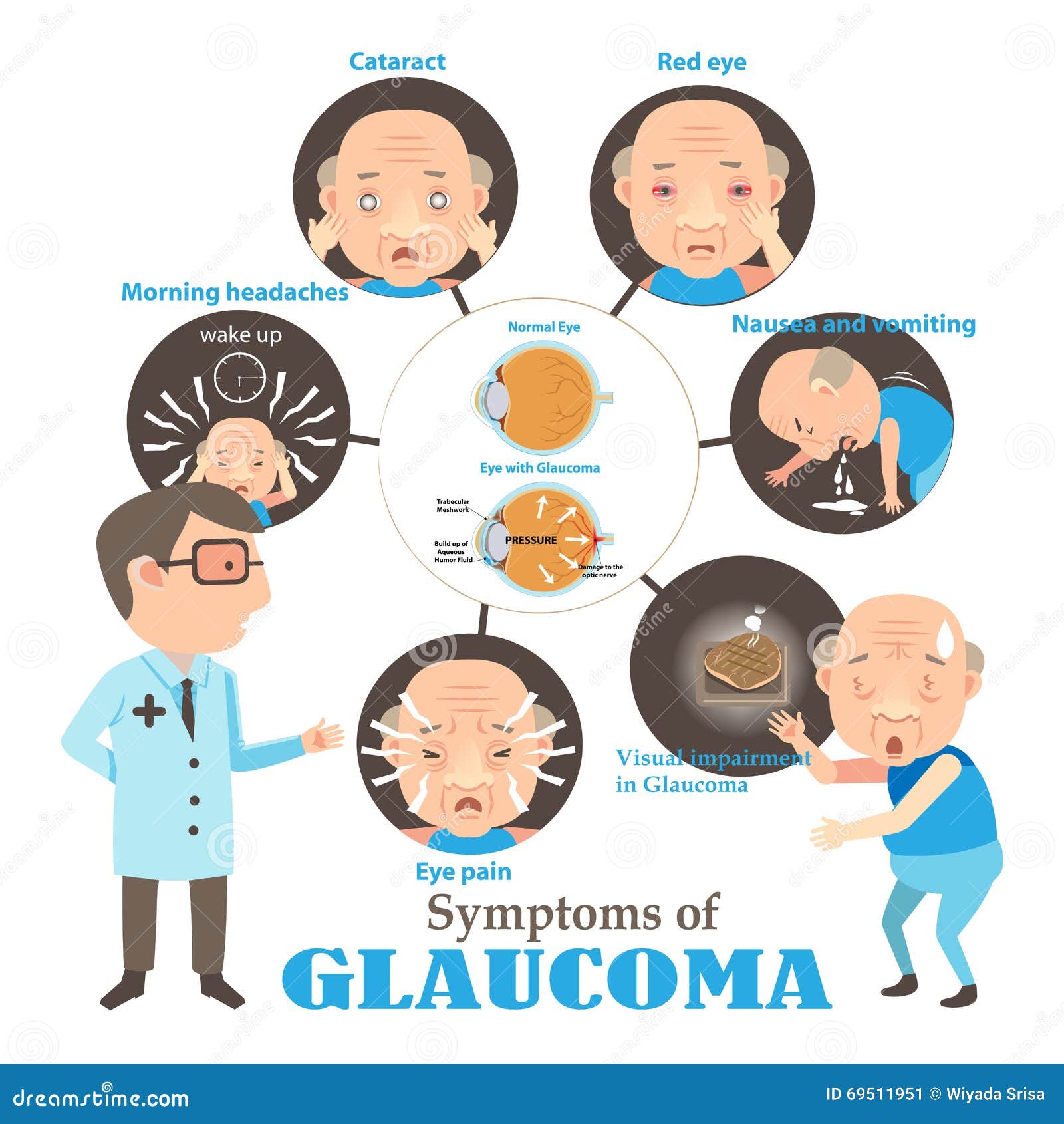 It may be caused by a variety of medical conditions, medications, physical injuries and eye abnormalities. Infrequently, eye surgery can lead to secondary glaucoma.
It may be caused by a variety of medical conditions, medications, physical injuries and eye abnormalities. Infrequently, eye surgery can lead to secondary glaucoma.
Glaucoma Suspect is someone whom the eye doctor is concerned may have or may develop glaucoma because of an elevated pressure inside the eyes or an optic never with a suspect appearance.
Ocular Hypertension occurs when an intraocular pressure of greater than 21 mm Hg is measured in one or both eyes, but the optic nerves appear normal and no signs of glaucoma are evident on visual field testing. Since not everyone with high eye pressure will develop glaucoma, ocular hypertension should not be considered a disease by itself. Instead, ocular hypertension is a term that is used to describe individuals who should be observed more closely than the general population for the onset of glaucoma.
Things You Need To Know
Glaucoma is a condition that damages the optic nerve and if treated for long, it can lead to permanent vision loss.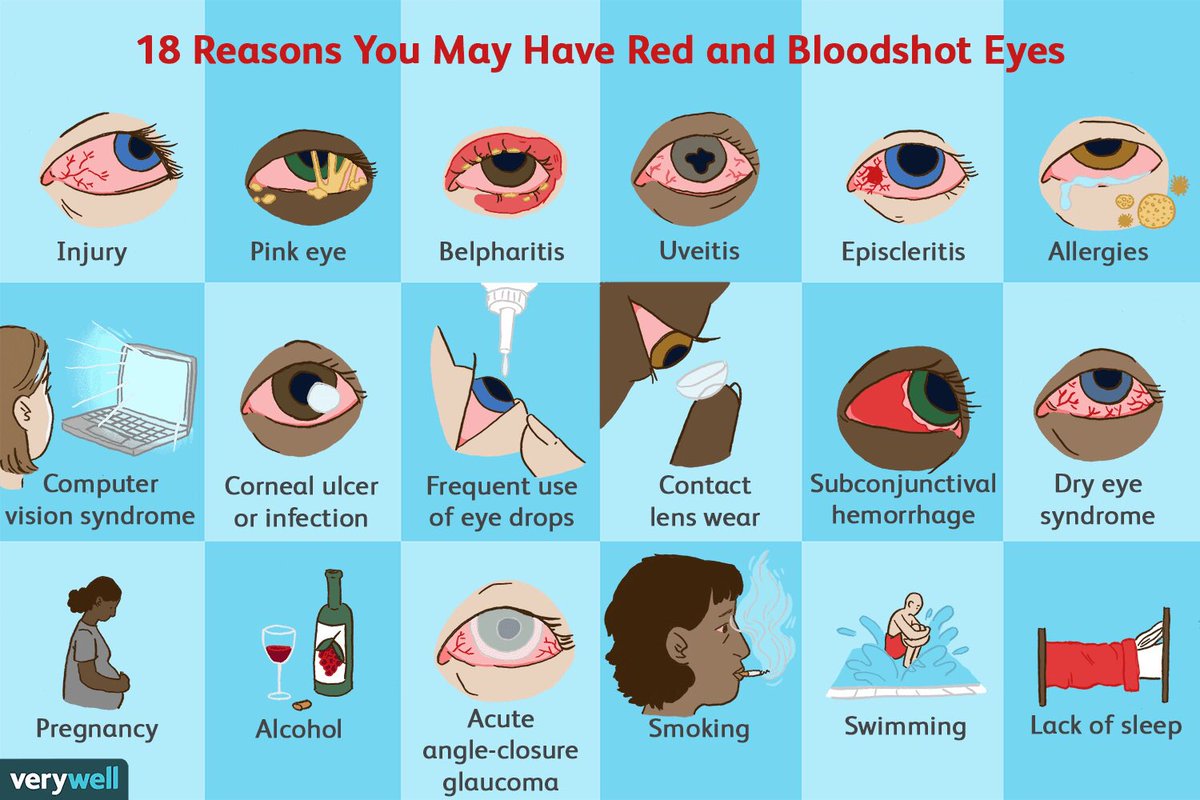 An individual is called a glaucoma suspect when there are one or more risk factors that may lead to glaucoma. If glaucoma is not treated for long, it can lead to blindness.
An individual is called a glaucoma suspect when there are one or more risk factors that may lead to glaucoma. If glaucoma is not treated for long, it can lead to blindness.
Being a glaucoma suspect doesn’t mean that the individual has optic nerve damage or vision loss due to glaucoma. It means the person is at the risk of developing glaucoma. As glaucoma is a slow-progressing disease, a definitive diagnosis of the condition takes time. To know about factors that make you a glaucoma suspect, keep reading.
What puts you at an increased risk of glaucoma?
As glaucoma can cause permanent loss of vision before any signs or symptoms appear, be aware of these risk factors:
- High internal eye pressure: Intraocular pressure is the fluid pressure inside the eye. It is a very important factor that eye specialists take into account while evaluating patients at risk of glaucoma. Those with elevated eye pressure are at the risk of developing glaucoma.
 However, it is important to note that there is a subtype of glaucoma in which eye pressure is not elevated.
However, it is important to note that there is a subtype of glaucoma in which eye pressure is not elevated.
- Age: As people grow older, the drainage system of the eyes do not work properly as they used to. This leads to elevated eye pressure, increasing the risk of glaucoma.
- Family history of glaucoma: Family history is also a risk factor, especially if close relatives such as parents or siblings have glaucoma. Anyone who is diagnosed with glaucoma should advise their first-degree relatives of their diagnosis and encourage family members to have a comprehensive eye exam regularly to detect glaucoma early or to prevent the condition.
- Thin cornea: It has been seen that patients with thinner corneas may have an increased risk of glaucoma. You can learn about the thickness of the cornea during a comprehensive eye exam that includes pupil dilation.
- Extreme nearsightedness or farsightedness: Patients with extreme nearsightedness or farsightedness have increased risk of angle glaucoma.
 This may be because of the different shape of the optic disc.
This may be because of the different shape of the optic disc.
- Certain medical conditions: People having certain medical conditions like diabetes, heart disease and high blood pressure also stand at an increased risk of primary open-angle glaucoma.
Treatment options for glaucoma suspects
Here are things that glaucoma suspects should do in order to prevent or reduce the risk of glaucoma:
- Follow up care: If you are a glaucoma suspect, make sure that you visit an eye specialist regularly. Taking good care of your eyes and getting regular checkups can help you keep a tab on the condition of your optic nerve. If you are a low-risk glaucoma suspect, you should see an eye specialist, once in six months at least.
- Eye drops: If you are a high-risk glaucoma suspect, the eye doctor may suggest you to use eye drops to lower the eye pressure.
 In some cases, laser treatment may also be recommended.
In some cases, laser treatment may also be recommended.
- Exercise safely and regularly. Moderate exercise may help prevent glaucoma by reducing eye pressure. Talk with your doctor about an appropriate exercise programme.
To get an accurate assessment of your eye health, visit Disha Eye Hospitals. Our comprehensive eye examination can help detect early glaucoma symptoms. We have some of the best eye doctors in Kolkata on board who can help you choose the right treatment option. To book an online consultation, click here.
90,000 Patients
24 August 2017
Glaucoma is a chronic eye disease that, if not properly treated, can cause irreversible blindness. In patients, intraocular pressure rises, cells of the optic nerve are destroyed, which leads to a decrease in vision, and in 6-20% of cases it is lost irretrievably.
More than 100 million people in the world suffer from glaucoma. In Russia, the number of such patients exceeds 1.25 million.The editors of Vesti.Meditsina have collected the most popular misconceptions about glaucoma, the belief in which has not waned over the years. We asked Alla Valentinovna Sidorova, Doctor of Medical Sciences, Head of the Department of Surgical Treatment of Glaucoma, MNTK “Eye Microsurgery” named after Academician S.N. Fedorov.
No symptoms – no disease
No. Glaucoma is an insidious disease in which symptoms appear late enough. Among them, blurred vision, the appearance of rainbow circles in front of light sources, for example, when a person looks at a light bulb or headlight of a car.
Pain and redness of the eye appear when glaucoma can no longer be cured. Vision is lost irretrievably and the disease enters the final, terminal stage.
A feature of glaucoma is the absence of symptoms at the early and advanced stages of the disease. The patient himself does not know about the disease until he begins to lose his sight. In order to notice the disease in time, a preventive examination by an ophthalmologist is imperative. You need to pass it once a year, and after 50 years – twice a year.
Glaukoma is treated with drops only
No. There are many treatments for glaucoma. For example, conservative methods – drops that are prescribed in order to try to relieve high pressure, which has a traumatic effect on the optic nerve.
There are a huge number of anti-glaucoma drugs in the world. There are those that can be used to compensate for intraocular pressure for a long time, especially in the early stages of the disease.
However, it is well known that glaucoma ranks first in blindness in the world and in disability. If the disease has passed into an expanded stage, then vision cannot be restored by any means. This means that it is necessary not only to start therapeutic treatment, but also to perform a surgical or laser operation on time.
The most effective treatment is considered to be a combination of both drug therapy (drops) and laser treatments. If necessary, surgery can also be performed.For example, minimally traumatic – non-penetrating deep sclerectomy. Such an operation is highly effective and allows you to preserve vision for many years. It is minimally invasive, unpleasant symptoms after surgery last only 1-3 days.
After the operation, a new pathway for the outflow of intraocular fluid is formed. The fact is that with glaucoma, intraocular fluid stagnation occurs – this leads to an increase in intraocular pressure. Due to the accumulation of fluid, the cells of the optic nerve gradually die off.During the operation, excess fluid is discharged, similar to the discharge of water in a dam.
In general, it cannot be argued that glaucoma can only be treated with drops. It is not always possible to cope with it without connecting laser surgery and surgery.
Modern drops for glaucoma are effective and harmless
Not really. Pharmacology is moving forward and indeed those drops that ophthalmologists use in the initial stages of glaucoma or in urgent cases are really effective and help to reduce intraocular pressure in a patient for a sufficiently long period.
There are mono-drugs as well as fixed combinations of drugs that really help. Their effectiveness is not in doubt, but there is no definite answer about safety.
Drops contain the active ingredient in the form of a solution, as well as the preservative benzalkonium hydrochloride. The negative effects of this preservative have now been identified. With prolonged use, especially if the doctor does not change the drug and the patient has been using the same medicine for a long time, dry eye syndrome (redness, pain, dryness) may develop.
If you use drops with a preservative for 3-4 years, then at the moment when surgical treatment is needed, it will not be as effective as it could have been if there was no stage of drug treatment. This is due to the fact that the preservative changes the ocular surface.
Glaucoma can be treated with folk remedies
No. Speaking of folk remedies, we mean a wide range of products: herbs, bee waste products, everything that folk wisdom has studied and collected for centuries.Despite the fact that in some conditions these funds may indeed be useful, this does not apply to glaucoma.
The instillation of herbal preparations or solutions, the use of honey, the intake of blueberries in large quantities does not have any effect on the condition of the eye.
As a result of this “therapy”, vision does not improve. When using folk remedies, valuable time when normal treatment could be started may be lost, then even surgical treatment is useless.
Instead of going to a doctor, people try to “heal” with folk remedies – vision disappears and it becomes impossible to return it.
Only elderly people suffer from glaucoma
Not really. Glaucoma is a disease of the elderly. However, there are different forms, for example, juvenile, pigmented, which appear in younger people.
You need to go to the doctor to rule out glaucoma if suspicious symptoms appear, for example:
- Sudden blurred vision when you want to rub your eyes, but there is no improvement after that;
- constant slight pain – the eye and the head hurt from the side of this eye.
Why does glaucoma occur in young people? Tissue degeneration can be genetically determined or a consequence of intrauterine changes.
Glaucoma can also be congenital. The changes in the tissues in this case are insignificant and the damage does not make itself felt for a long time, but with age they can manifest themselves.
The operation should be done only when vision has significantly deteriorated
No. We see cases when patients come to us after the doctor has already exhausted all his means: people instill three types of drops, take pills, but the intraocular pressure does not decrease in any way, vision falls catastrophically.Here we are already talking about the operation.
We, the specialists of MNTK, have repeatedly called – do not wait for the moment when vision in glaucoma begins to deteriorate. Even if the patient receives treatment, it must be remembered that glaucoma, operated on at an early stage, stops. This allows you to preserve vision for many years.
This is a great opportunity for a person to preserve the quality of life and their visual functions as they were when they went to the doctor.
Vision will also improve after glaucoma surgery as after lens replacement
In most cases, no.In some cases, especially if very high eye pressure goes away, vision does improve after the operation. But at the same time, I would like to warn you that the task of such an operation is to preserve vision, not to improve it.
We do not expect the vision to be as good as after replacing the lens. Our task is to preserve the patient’s vision for many years and stop the progression of the disease.
After surgery, glaucoma will no longer appear
This is not always the case.The answer to this question largely depends on what stage the disease was at when the patient consulted a doctor. If we operate on a patient at an early stage, then with further observation by our ophthalmologist, with the correct management of the patient by the doctor and the patient following all instructions, the disease will not progress at all.
It remains with the patient forever, but if all measures were taken – laser or surgery – the disease will be stopped at this initial stage and there will be no progression of the disease towards the destruction of optic nerve cells.
If the patient addresses at a late stage, if there is a loss of visual functions or loss of visual fields (and significant), then even combined treatment is unable to help and stop the progression of the disease.
If you experience any symptoms, you need to see a doctor – an adjustment or even a second operation may be necessary.
It is very difficult to get into the leading federal institution for the treatment of glaucoma
Not at all. MNTK is open to everyone.Our clinic works from 8-30 to 17 hours. You only need a referral from the district ophthalmologist – having it in your hands, you can make an appointment by phone or online. In addition to the direction, you also need a passport and a medical certificate. Those who wish to be treated commercially do not need a referral.
Glaucoma always leads to blindness
No. If the patient did not engage in treatment, if the treatment was started untimely, then the disease can progress and rather quickly.This leads to loss of vision.
Now we can use the whole range of possibilities: conservative treatment, laser treatment, surgical treatment. You can use each approach separately or combine them.
A patient who has consulted a doctor on time (at the onset of the disease), or the disease was detected during a preventive examination, has every chance of maintaining vision and quality of life. In the event that glaucoma has existed for more than a year, then it is advisable not to postpone laser or surgical treatment.
The number of cases of glaucoma is increasing worldwide from year to year. This is due to an increase in life expectancy and an improvement in diagnostics. The number of patients may increase, but it is important that the number of those who have lost their sight completely does not increase. The most correct thing to do is to see a doctor on time.
90,000 how to detect glaucoma in time – HealthInfo
According to the WHO, 14% of blind people worldwide have lost their eyesight precisely because of glaucoma.This disease is one of the most dangerous among the eye: if left untreated, it will inevitably lead to blindness. We tell you what can provoke a dangerous ailment, how to treat it and not how to prevent it from appearing.
How does glaucoma develop?
At the beginning, the circulation of the ocular fluid is disturbed – instead of moving around the eye, it stagnates. Then intraocular pressure rises – this leads to the destruction of cells of the retina and optic nerve. And already because of this, the blood supply to eyes is disrupted.As a result, the optic nerve atrophies and stops sending signals to the brain.
What is the threat?
A person begins to see worse: his peripheral and twilight vision is impaired, the field of vision is limited. As a result, he goes blind.
What are the symptoms of glaucoma?
In the initial stages of the disease, there may be no symptoms at all. Only sometimes, with an acute attack of glaucoma, there is a sharp pain, nausea, vomiting, redness of the eyes, iridescent circles or colored rings before the eyes.However, with progressive glaucoma, all patients begin to see worse – severe lacrimation appears, due to which it is impossible to open the eyes, the image becomes narrower and narrower.
Who Can Get Glaucoma?
Scientists are still arguing about what exactly leads to disease. However, science is well aware of the risk factors:
- Heredity;
- Older age – most often glaucoma develops in people over 60;
- Myopia and hyperopia;
- Postponed eye surgery;
- Various eye diseases, including increased eye pressure;
- Violation of the blood supply to the tissues of the optic canal;
- Long-term use of eye drops, steroid preparations;
- Cardiovascular diseases ;
- Diabetes mellitus.
How to diagnose an ailment?
Contact an ophthalmologist as soon as possible for any suspicious symptoms. Depending on the type of violation, he will prescribe the following procedures:
- Tonometry – measurement of intraocular pressure;
- Gonioscopy – examination of the drainage system of the eye;
- Pachymetry – measurement of corneal thickness;
- Computer perimetry – peripheral vision examination;
- Tonography – determination of the amount of intraocular fluid;
- Optical coherence tomography – diagnostics of the degree of damage to the optic nerve.
Can glaucoma be cured?
Yes: the sooner you see your doctor, the better your chances of a full recovery. In the initial stages , doctors prescribe eye drops. Many patients have been using them for 15-20 years, and this is enough for them. However, if symptoms persist, surgery will be required. There are 2 types of intervention:
- Laser treatment of glaucoma. This method has been used for over 30 years and does not require opening the eyeball.This means that the risk of complications is minimal.
- Surgical treatment – Russian doctors have excelled in this industry. They have created a set of instruments “Dola”, which helps to carry out operations with maximum accuracy: with the help of small spatulas, the doctor penetrates into the eye exactly as much as it is required and restores the pathways for the outflow of fluid from the eye cavity. Within a month, the patient recovers completely.
Is there prophylaxis for glaucoma?
To prevent all eye diseases, it is recommended to visit an ophthalmologist once a year.After 40 years, in addition to routine examination, it is also required to measure eye pressure. Here are some more general tips from doctors:
- Eat a balanced diet and get enough vitamin A;
- Try not to stay in the dark for a long time and do not watch TV with the lights off;
- If is working at the computer for a long time, take a break every 45 minutes.
You can learn more about the unique development of Russian scientists from the plot of the program “Live Healthy”
what we know about it
We are used to associating melanoma with skin cancer, in fact, this type of tumor affects various areas of the eye, including including retina, eye vessels, iris, ciliary body.Approximately 7% of pigment epithelial cancers form in the tissues of the eyeball. The tumor is very aggressive and rapidly developing.
Unlike other eye diseases that cause blindness – glaucoma, cataracts, degenerative eye diseases – we are much less aware of eye melanoma. Today, in Israeli clinics, many eye cancers are successfully treated.
What is uveal melanoma
Uveal melanoma in the initial stages, as a rule, does not cause visual impairment.Symptoms such as temporary blurred vision, distorted images, or flashes of light may occasionally occur, but these are also intermittent. Most eye melanomas develop calmly, without disturbing vision, until it is too late. Uveal melanoma is a rare type of cancer, the risk of developing the disease increases with age. Unlike skin melanoma, which is directly related to exposure to sunlight, eye melanoma is not affected by the sun.In most cases, the tumor is found at the ophthalmologist’s appointment, when, when checking the dilated pupils, the specialist recognizes a suspicious cloudiness.
How is eye melanoma diagnosed
After an eye examination, if a specialist detects suspicious symptoms, the patient is referred for an additional examination, which may include various laboratory tests.
- Ultrasound of the eyeball tissues – the check helps to identify pathologies in the internal structures of the fundus, to determine the size of the tumor and its characteristics.
- Ophthalmoscopy – in which, using special optical devices, the condition of the retina and lens of the eye is checked and the presence / absence of tumor cells is determined
- Diaphanoscopy – The test detects changes in the iris and cornea of the eye.
- Angiography of the blood vessels of the eyeball
- CT – examination , allowing to identify the nature of changes associated with the development of the tumor
Modern methods of treating eye melanoma
When it comes to a small tumor, or a tumor found in the early stages, one of the effective methods of treatment can be brachiotherapy – radioactive radiation.A metal disk containing radioactive material is fixed for a short period in the affected tissues of the eye. Radiation therapy of this type works in a targeted manner and quickly kills cancer cells without harming other tissues or organs. Radiation is sometimes given postoperatively to prevent recurrence of the disease. Early detection of a tumor is the only way to save a patient’s vision. Small to medium melanomas have a cure rate of about 80% today.
Modern organ-saving methods of treating ocular melanomas include laser coagulation, which destroys the tumor using light radiation, and the cryodestruction method, which destroys tumor cells using low-temperature liquid nitrogen.
Unfortunately, in later stages, when the tumor reaches a sufficiently large size, the only possible option is surgery, in which the eyeball is removed completely. In such cases, an artificial eye prosthesis is selected for the patient, corresponding to his anatomical features. Innovative eye microsurgery technologies fully preserve the functions of the eye muscles, which allow the patient to make eye movements.
Fog before the eyes? Hurry to the doctor.
Fear of loss of vision in a person suffering from eye disease deprives the usual quiet life. Indeed, there are diseases that are most dangerous for vision, and among those that threaten blindness, the so-called glaucoma occupies a large place. About what this disease is and how to protect yourself, our correspondent talks with an ophthalmologist of the Inzhavinsky central regional hospital Vladimir MOROZOV .
Glaucoma is a large group of eye diseases characterized by a constant or periodic increase in intraocular pressure with the subsequent development of typical visual field defects, decreased vision and atrophy.The disease is chronic, requiring mandatory regular monitoring for many years.
Early diagnosis of glaucoma, the identification of its initial signs are of exceptional importance, and therefore the need for a mandatory preventive dispensary examination is understandable.
– Vladimir Ivanovich, what symptoms should alert you and force you to see a doctor?
– One of the symptoms of glaucoma is an increase in intraocular pressure, changes in the visual field.With the help of a tonometer, the ophthalmologist will determine the parameters of intraocular pressure. Normal corresponds to 9-22 mm Hg, glaucoma is more likely to be suspected in the high-norm zone – 17-22 mm.
In addition, the doctor checks the acuity of the central vision and examines the peripheral vision to detect the disease. Such an examination is carried out during a medical examination, which does not need to be waited for if there are alarming symptoms – decreased vision or “fog” in front of the eye.In this case, you must immediately consult an ophthalmologist. The earlier the treatment of glaucoma is started, the greater the chances of preserving visual functions.
– How does the treatment of glaucoma begin and how long is it?
– To reduce intraocular pressure, drops are used, whose action is aimed at improving the outflow of fluid from the eye. Since glaucoma has a chronic course, and it cannot be cured, you have to bury drops for the rest of your life, as well as be observed by an ophthalmologist.The insidiousness of the disease is that even with adequate treatment, intraocular pressure can get out of control, becoming persistently high. In this case, an urgent operation is necessary, since for the optic nerve, which is under the load of intraocular fluid, every day of delay threatens with the loss of part of its fibers. During the operation, additional outflow pathways for the intraocular fluid are created, after which the need for instillation of drops often disappears. But it is impossible to “remove” glaucoma with surgery, just as it is impossible to improve visual functions.Intervention only allows you to preserve the vision that the eye possesses and delay the deterioration. Since glaucoma is steadily progressing, the effect of the operation lasts 3-4 years, after which either repeated intervention or constant instillation of drops is required. Most often, you have to combine both options against the background of compulsory treatment of concomitant diseases. Uncompensated diabetes, hyperthyroidism (this is a hyperfunction of the thyroid gland) or high blood pressure, as well as high cholesterol, will not allow you to achieve normal intraocular pressure.
– Who is most at risk of “getting acquainted” with glaucoma?
– First of all, these are people with untreated arterial hypertension, as well as smokers or with dysfunctional heredity. Another major risk factor is free radical damage associated with aging (after age 45), impaired health, hypotension, poor diet, diabetes and other vascular diseases, as well as allergies and gastrointestinal problems.Various toxins that damage the optic nerve can contribute to vision loss in glaucoma.
– How can the occurrence of glaucoma be prevented?
– With the current insufficient level of our knowledge about the causes of glaucoma, there is no way to prevent its occurrence. But to preserve vision for many years with glaucoma is in our hands. The best results are obtained when glaucoma treatment is started early. Hence the important role of early diagnosis of the disease follows.This can be achieved in two ways. The first way is the early appeal of a sick person to an ophthalmologist in case of phenomena suspicious of glaucoma. The second way is medical examination of people over the age of 40. This path can be called an active method of early diagnosis.
90,000 causes, types, symptoms, diagnosis and treatment in Moscow
Causes
The most common cause of retinitis is infectious inflammation, and the causes of inflammation can be very different: bacteria, viruses, fungi, protozoa and parasites, as well as their toxins.Basically, any acute or chronic infection in the body can lead to retinitis.
Also, inflammation in the retina can occur due to the effect of the own immune system on the tissues of the eye, for example, in rheumatological diseases. Traumatic inflammation of the retina is much less common.
Types
Retinitis of the eye downstream can be acute and chronic. This determines the features of the symptomatology – its severity, the variety of signs, etc.
The pathological process can spread to the entire retina (total lesion), to its edges (peripheral form) or only to the posterior parts (posterior retinitis). Very often, the choroid is also involved in the inflammatory process at the same time, so the diagnosis in this case is chorioretinitis.
Manifestations
Retinitis in typical cases is characterized by the following symptoms:
- Rapidly progressive decrease in visual acuity;
- The appearance of fog before the eyes and a veil;
- Floating spots and dots;
- Flickering objects;
- Distortion of their contours;
- Flashes of light before the eyes;
- Falling out fields of view.
In addition to hereditary and congenital conditions, these symptoms are associated with certain factors that increase the likelihood of developing retinitis. These are chronic infections in the body, rheumatological diseases (hemorrhagic vasculitis, rheumatoid arthritis) and surgery on the organ of vision.
Retinitis of Coats
Retinitis of Coats is a congenital but not hereditary disease. It is characterized by unilateral retinal damage due to the wrong course of the vessels behind it.With this pathology, blindness and glaucoma (a condition with increased intraocular pressure) often develop.
If there is such retinitis, its symptoms are quite specific. First of all, the doctor detects during an otfalmoscopy such a sign as leukorrhea – a white glow of the retina. In addition, a person is worried about blurred vision, flashes of light and emerging color patterns (they are associated with detachment of the retina).
When photographing with flash, almost all patients have a “yellow eye” in the image.This color is associated with the reflection of light rays from the dilated vessels, in which there are cholesterol plaques. If the child has yellow eyes in the photo, then it is imperative that you immediately contact an ophthalmologist. You will be assisted and received at a convenient time in the NEARMEDIC centers.
Retinitis pigmentosa
Retinitis pigmentosa is a hereditary pathology in which rods and cones have an abnormal structure. As a result, vision loss progresses and blindness may develop.Such patients are concerned about the following disorders:
- Lack of vision in the dark, because retina rods are initially affected;
- Loss of central or peripheral vision;
- Blurred vision;
- Poor color visibility;
- Severe fatigue.
Cytomegalovirus retinitis
CMV retinitis is an inflammatory lesion of the retina of the eye caused by cytomegalovirus. Most often occurs in people with weakened immunity, incl.hours against the background of HIV infection. Typically acute or gradual loss of vision. At the same time, there is an indistinctness of the contours of the objects under consideration, the flickering of flies in front of the eyes and the presence of floating spots. Cytomegalovirus is characterized by the sequential involvement of one and then the other eye.
Retinitis, different in nature, are clinically similar to each other, so it is difficult to distinguish between them. But there are certain features that are very rare in cytomegalovirus infection. So, for her, the appearance of soreness and a burning sensation in the eye, increased tearing and irritation of the conjunctival membrane is atypical.
Modern diagnostics at NEARMEDIC
An accurate diagnosis is 50% of effective treatment. For example, if it is cytomegalovirus retinitis, then only antiviral agents will be effective, if bacterial, then antibiotics, etc. Therefore, the examination should be trusted by the professionals of the NEARMEDIC multidisciplinary centers.
Diagnosis of retinitis in NEARMEDIC is carried out taking into account the individual characteristics of the patient, for whom a special examination program is being developed.It includes both instrumental and laboratory methods.
Instrumental studies that will help identify retinal damage are:
- Visometry – assessment of visual acuity, which rapidly decreases against the background of retinitis;
- Biomicroscopic examination of the eye – intravital assessment of its structure under magnification;
- Ophthalmoscopy – the main method to assess the structure of the retina and the underlying vascular;
- Tonometry – determination of intraocular pressure indicators, which is important before starting treatment;
- Radiographic examination of the sinuses of the nose;
- Radiography of the lungs, etc.
Laboratory examination is primarily aimed at identifying the cause of retinitis. Therefore, a comprehensive examination is carried out. First of all, rheumatic tests and C-reactive protein are recommended to exclude the autoimmune nature of the disease. Bacteriological examination of the discharge from the conjunctival sac is indicated for suspected microbial inflammation of the retina. In the case when intracellular pathogens are the most likely cause of inflammation, serological research comes to the rescue.It detects infection with herpesvirus, cytomegalovirus, toxoplasma, chlamydia.
Treatment
When retinitis is diagnosed, treatment should be immediate because the risk of developing blindness is very high. Correctly selected medicines form the basis of therapy. The treatment program includes:
- Anti-inflammatory drugs. At the initial stage, corticosteroids are usually used, which are more active than nonsteroids. As the inflammation subsides, they switch to non-steroidal drugs that are better tolerated.But in each case, an individual approach is required, so the doctors of NEARMEDIC centers do not carry out routine treatment of patients with retinitis.
- Preparations for pupil dilation, which create the most favorable conditions for the retina.
- Antimicrobial therapy that depends on the causative agent. Antibiotics for bacterial flora, antimycotics for fungal, antiviral – for viral.
- Diuretics, if the pressure inside the eye is increased or glaucoma develops again.They prevent the retina from further damage.
Coats retinitis is treated primarily with a laser. The laser beam obliterates (seals) pathologically dilated vessels to prevent retinal detachment. If it has already developed, then the help of a vitreoretinal surgeon is required.
Retinitis pigmentosa in the absence of treatment progresses rapidly, therefore, if you have suspicious complaints, you should contact your doctor immediately. Modern therapy includes taking vitamin A in an adequate dosage.In some cases, the use of a retinal prosthesis is indicated.
CMV retinitis is a direct indication for the use of antiviral agents and immunostimulants. Such treatment allows you to suppress the activity of viral reproduction and prolong periods of remission when there are no symptoms of the disease. It is not possible to completely destroy viral particles in the body at this level of development of medicine, but their damaging effect on the retina can be prevented.
Treatment at NEARMEDIC is qualified assistance that meets modern quality standards for medical care.
Ophthalmologist
According to official statistics, eye diseases in children begin to develop at an earlier age. In this regard, it is very important to do prophylactic examinations of the child’s vision with a pediatric ophthalmologist. The most optimal periods for consultation are considered to be the age of the child 1,3,6,9 months and then once a year.
Sometimes, at an early age, a baby may experience suspicious symptoms of eye diseases, which can alert parents, these include:
- eye inflammation, ocular discharge, redness of the eyelids;
- pain, pain in the eyes;
- the presence of a foreign body in the eye;
- involuntary movements of the eyeballs, which may indicate the difficulty of fixing the gaze – nystagmus;
- deviation of the eyes or one eye from the line of fixation of the gaze, which is often a symptom of developing strabismus;
- drooping of the eyelid – ptosis;
90,061 lacrimation;
In addition, an appointment with a pediatric ophthalmologist must be contacted for the treatment of diseases of the oculomotor apparatus such as:
- astigmatism;
- myopia;
- hyperopia;
- cataracts;
- glaucoma;
90,061 retinal diseases;
In our medical center, at the reception of a pediatric ophthalmologist, you can receive the following services:
- test of visual acuity and nature;
- examination of the fundus condition – ophthalmoscopy with a narrow and wide pupil;
- definition of visual fields;
- selection of an individual eye treatment regimen;
- measurement of intraocular pressure by a non-contact method and according to Maklakov;
- detection of visual impairment of neurological origin;
- probing of the nasolacrimal canal;
- vision correction;
- hardware treatment “RUCHEK” with dynamic control;
The device “RUCHEK” is used to train the accommodation mechanism.During the procedure, the gaze is focused on images that appear at different distances from the eyes, from a minimum to more than ten meters, which, with visual training, corresponds to practical infinity. The unique capabilities of the “RUCHEYKA” are used to relieve the spasm of accommodation. Classes on this apparatus have a positive effect on the prevention, stabilization and treatment of myopia, hyperopia, amblyopia and other eye diseases. The course of modern hardware procedures is a wonderful opportunity with gentle therapeutic methods, in an easy playful way, to solve serious vision problems in children from 3 years old.
Medical indications for apparatus treatment with the device “RUCHEK”:
- decreased vision with refractive errors, including myopia, astigmatism, hyperopia;
- accommodation violation, including accommodation spasm;
- amblyopia of various origins, binocular vision disorders;
- Increased visual fatigue, asthenopic phenomena;
Medical contraindications for apparatus treatment with the device “RUCHEK”:
There are a number of relative contraindications, which in each case are assessed by the doctor and decides on the possibility of using this technique in the patient.
The advantages of the method are:
- improvement of visual performance during treatment;
- high efficiency and sustainability of treatment results;
- good tolerance of treatment by patients;
- safety of the method for patients;
Samoshina Svetlana Viktorovna
ophthalmologist of the second category.
Graduated from the St. Petersburg State Pediatric Medical Academy in 2004.in the specialty “Pediatrics”. From 2004 to 2006 – Clinical residency in the specialty “Ophthalmology”. Work experience in the specialty since 2007. Extensive practical experience in the treatment and prevention of diseases of the eye and orbit in adults and children, correction of visual impairments, including “contact correction”.
You can publish your comment in the attached form:
Rules for publishing comments
Laser treatment of the retina in Tambov
Retinal detachment is a serious eye disease that, if untreated, inevitably leads to complete blindness.The essence of this disease is the separation of the retina from the choroid. The retina ceases to function normally and vision is severely impaired. DETAILS
In case of retinal detachment, urgent surgical intervention is required. Timely (within a few days) the operation performed allows you to restore your vision completely. However, modern surgical technology makes it possible to provide effective assistance even in very advanced cases.
REMEMBER! If the disease is started, there may be a danger of chronic inflammation, the development of cataracts, the eye may completely lose the ability to see.Especially vigilant should be those people who have already had a retinal detachment in one eye. They should be examined periodically by an ophthalmologist. If suspicious symptoms appear, you should immediately contact your
a doctor for treatment of the retina of the eye.
Only a specialist will determine whether you have retinal detachment, what is its level, and will also carry out all the necessary examinations using modern high-precision equipment. The results of the research will allow the doctor to recommend the necessary treatment.
DIAGNOSTICS OF DEPLOYMENT
RETINES
RETINAL TREATMENT
A patient with retinal detachment requires urgent surgical intervention!
The goal of surgical treatment is to detect the retinal tear and close it. There are several methods currently available. In case of small and not started retinal breaks, local filling gives good results.
In severe cases, you have to resort to more complex operations.Large or centrally located tears are usually accompanied by severe scarring that prevents the retina from connecting to the vascular layer. In such cases, it is necessary to resort to an operation – vitrectomy.
Each of these interventions is selected individually and depends on how much time has passed since the onset of retinal detachment, what size it is, how many breaks there are, where they are located, etc. Depending on the specific case, the treatment of the retina can be carried out in one or more stages.
Operations are performed by world-class surgeons of the vitreoretinal surgery department, using the latest micro-invasive technologies, which make it possible to operate without opening the eyeball, using a puncture, which does not require stitches. The postoperative period is easier, and the results of retinal treatment are significantly improved.
Operations in the Tambov branch of the MNTK “Eye Microsurgery” them. Academician S.N. Fedorov are carried out with general and local anesthesia under an operating microscope.To perform operations on vitreoretinal surgery, operating rooms are equipped with the most modern devices from the best manufacturers.
On the morning of the operation, drops are instilled into the eye to dilate the pupil. You may also be offered a mild sedative to help you relax and not worry.
In the operating room you will be accompanied by the surgeon, his assistant, the operating room nurse, the anesthesiologist and the nurse anesthesiologist.
| Vitrectomy | Total treatment time – 14 days (preoperative examination – 2-3 days, on the 4th day – surgery, postoperative observation – 5 days). |
|---|
Patients with high and complicated myopia for the prevention of retinal detachment are prescribed laser prophylaxis of retinal detachment.
| Laser prophylaxis of retinal detachment | The total time of treatment of the retina of two eyes in a bilateral process is 3-10 days (preoperative examination – 1-2 days, on the 3rd day – operation of one or two eyes, postoperative observation – 7 days). |
|---|

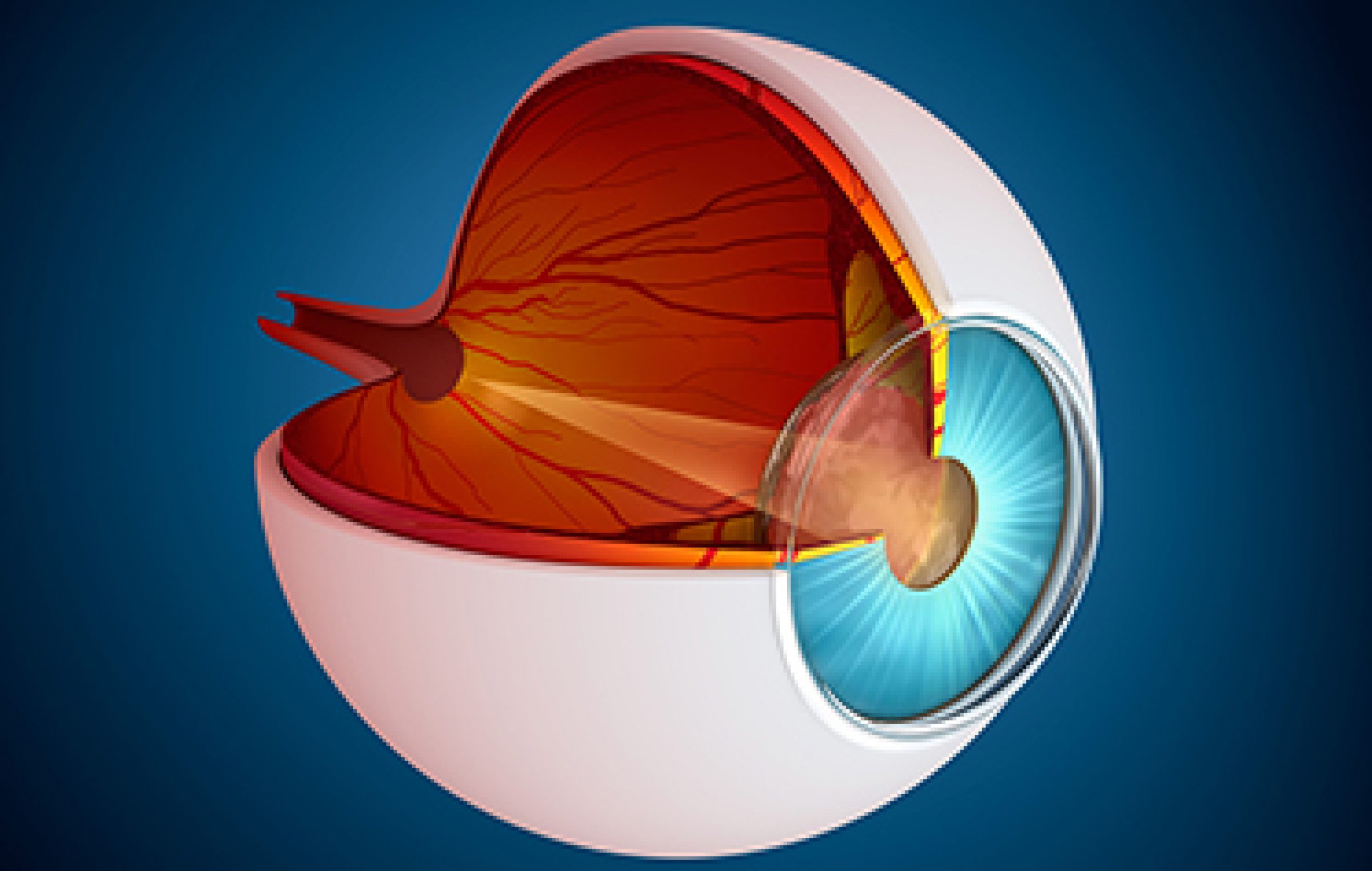
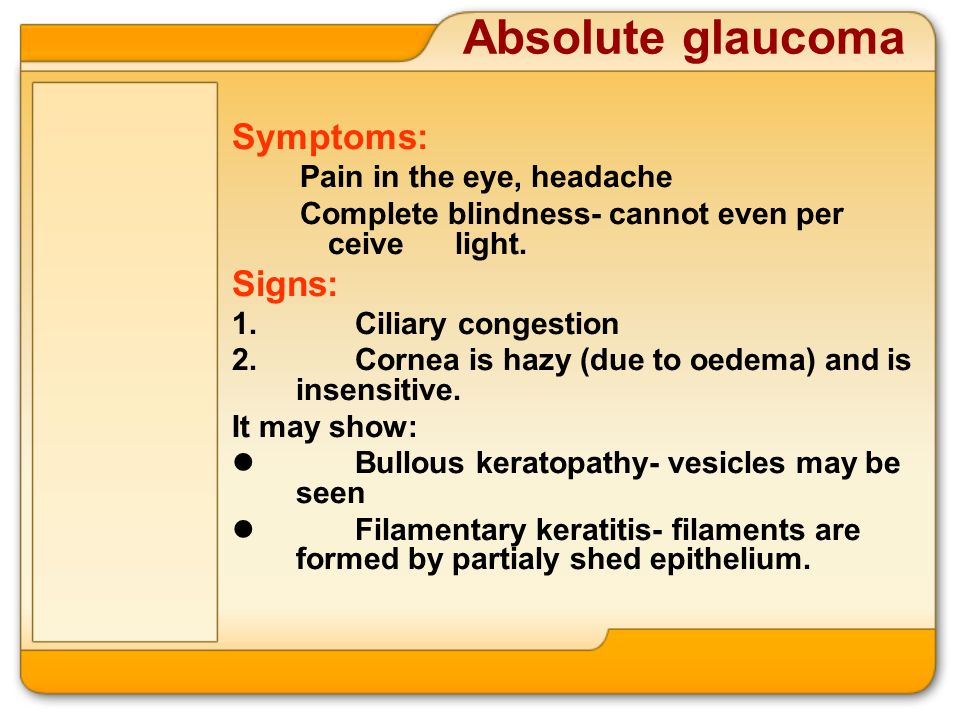 Once gone, areas of lost vision cannot be restored.
Once gone, areas of lost vision cannot be restored. ” Normal eye pressure is between 8 mmHg and 22 mmHg.
” Normal eye pressure is between 8 mmHg and 22 mmHg.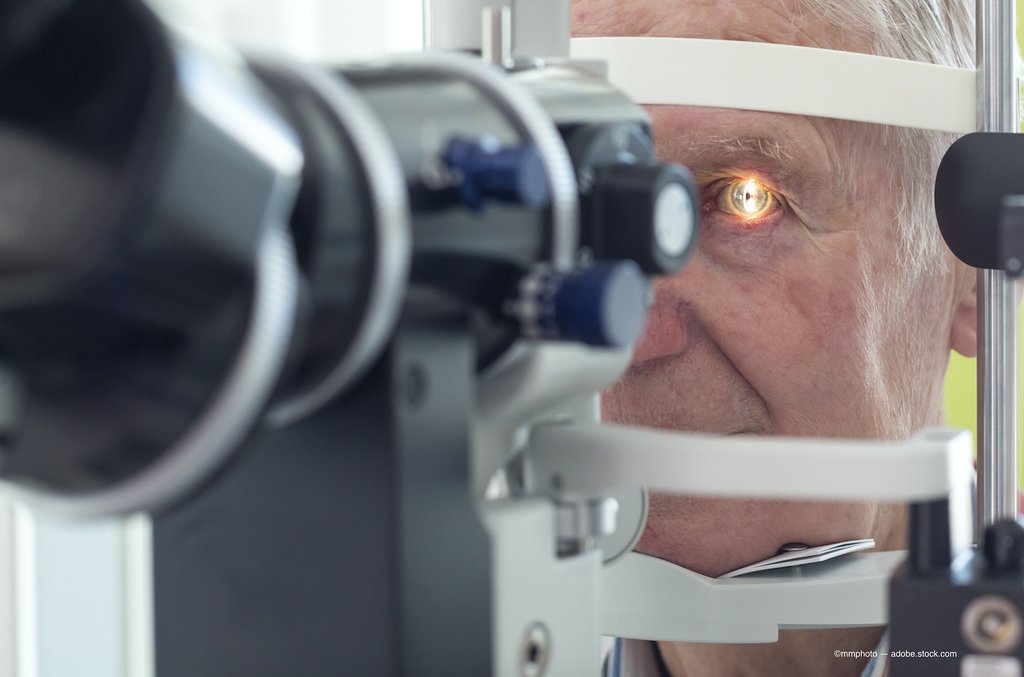
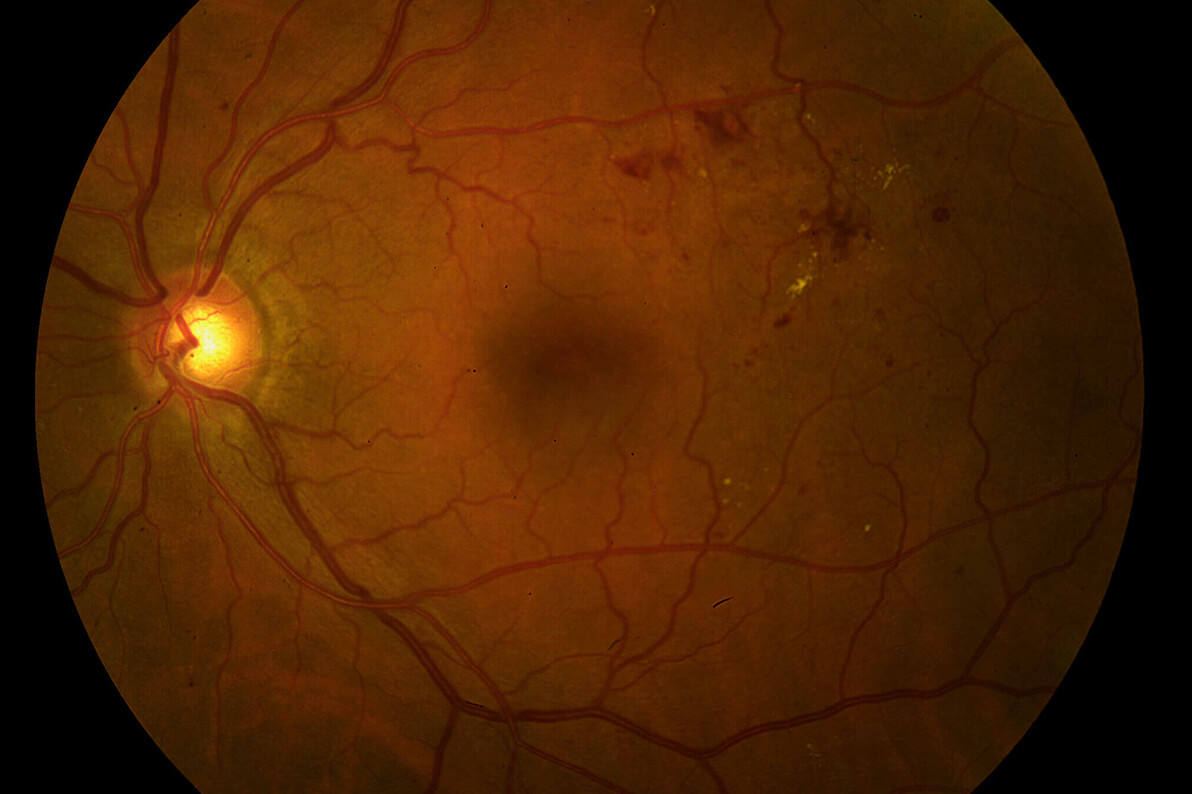 However, it is important to note that there is a subtype of glaucoma in which eye pressure is not elevated.
However, it is important to note that there is a subtype of glaucoma in which eye pressure is not elevated. This may be because of the different shape of the optic disc.
This may be because of the different shape of the optic disc.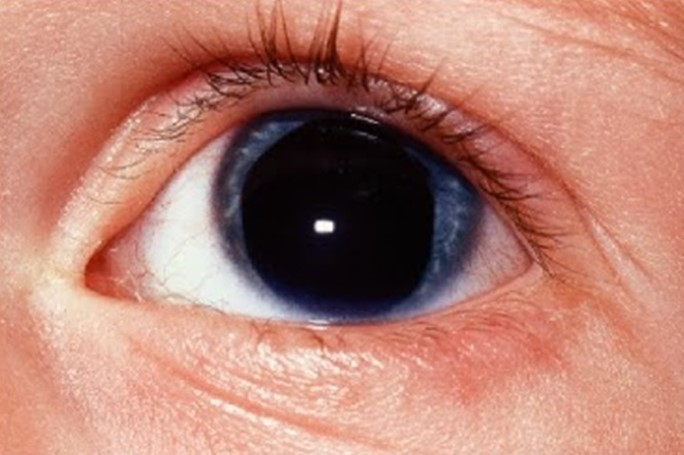 In some cases, laser treatment may also be recommended.
In some cases, laser treatment may also be recommended.